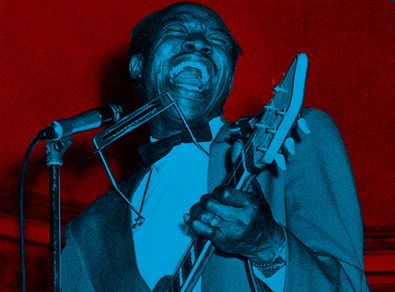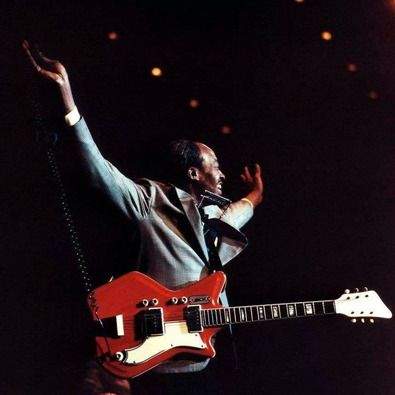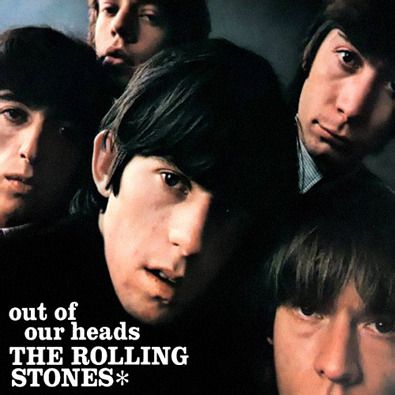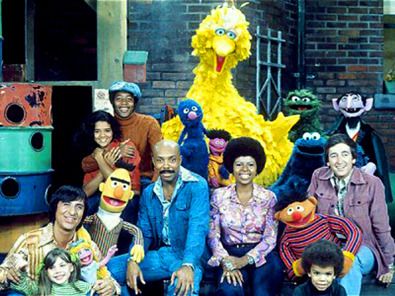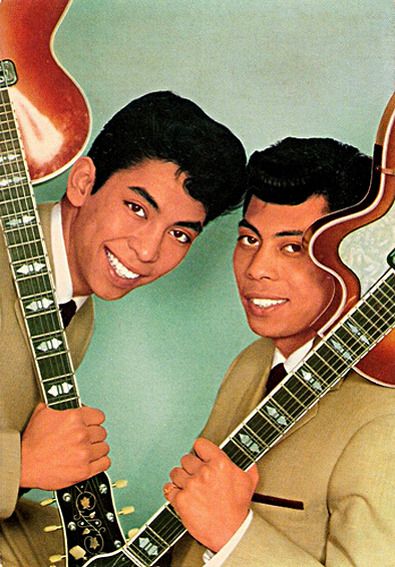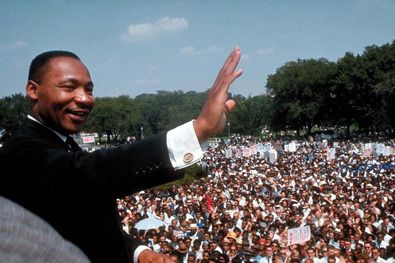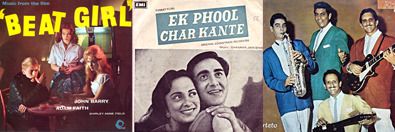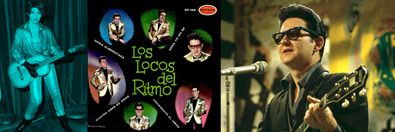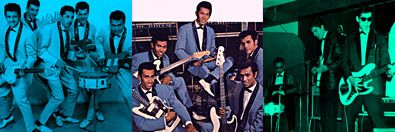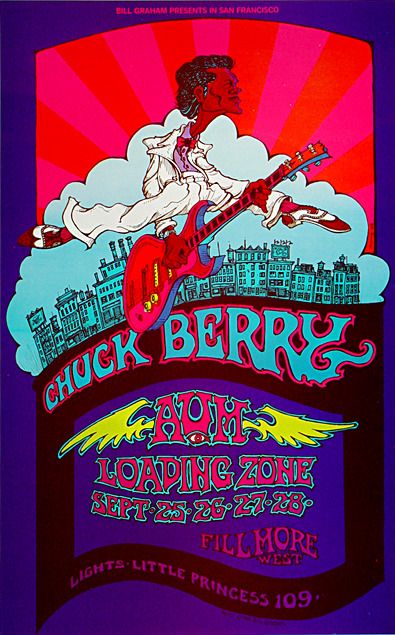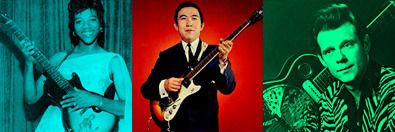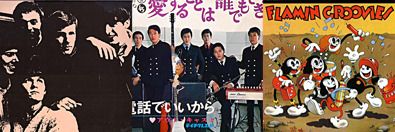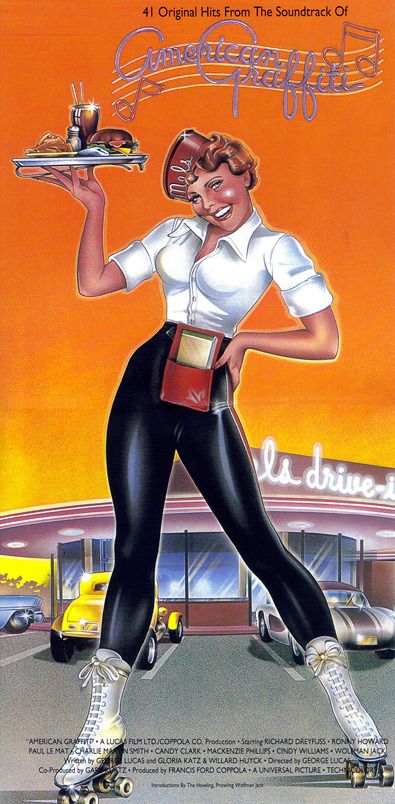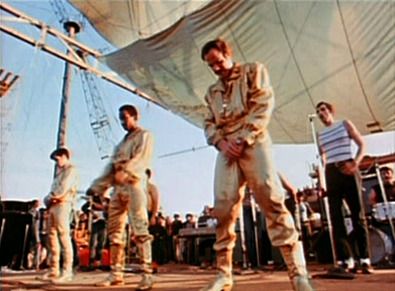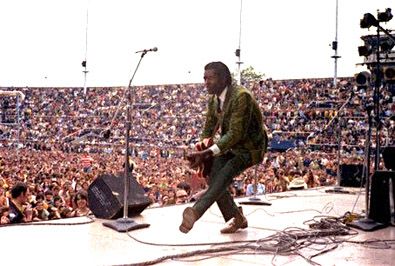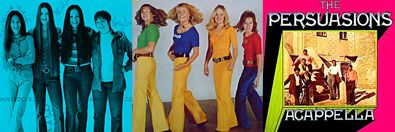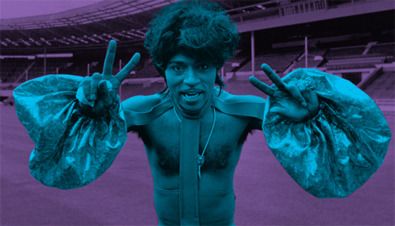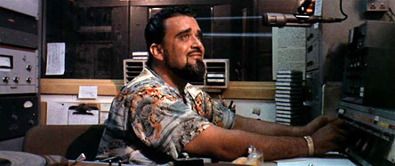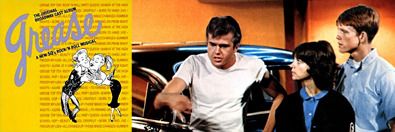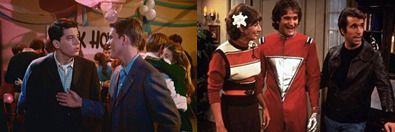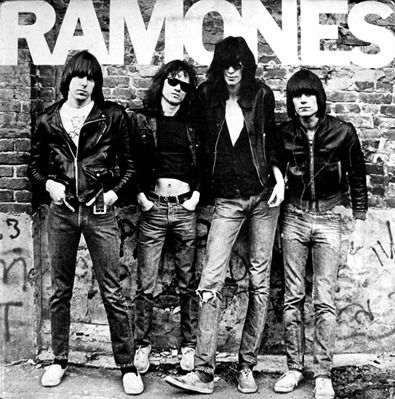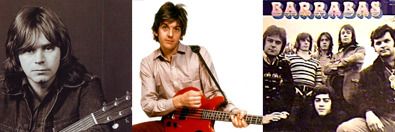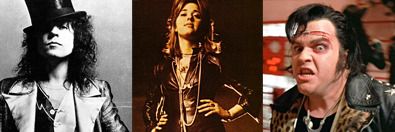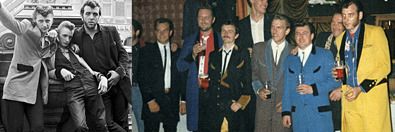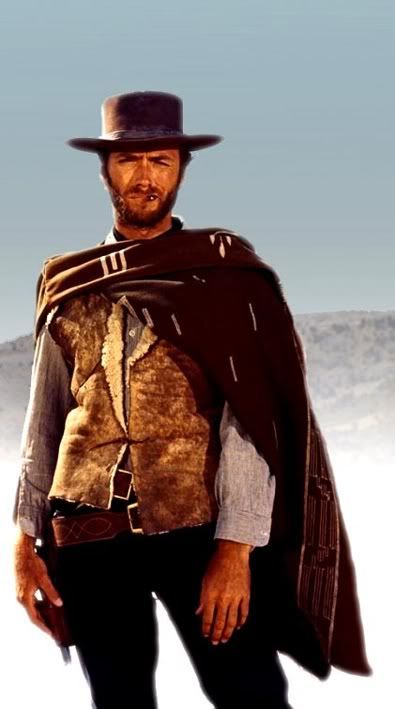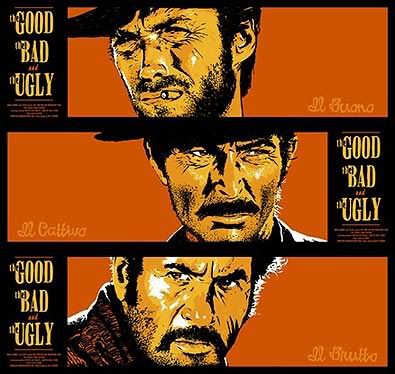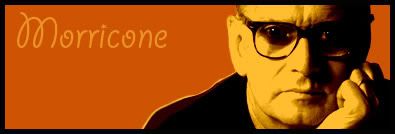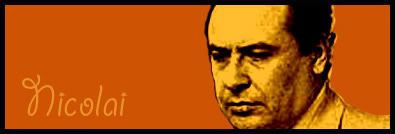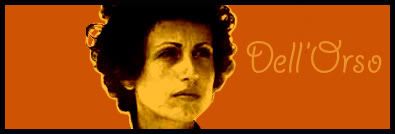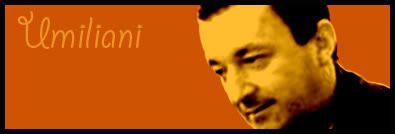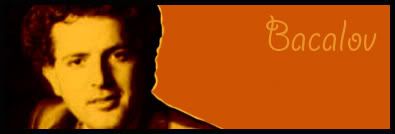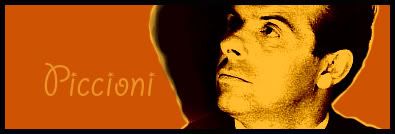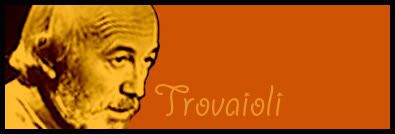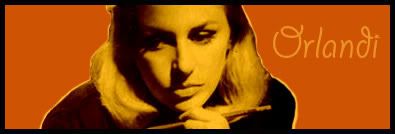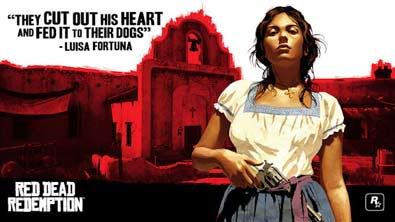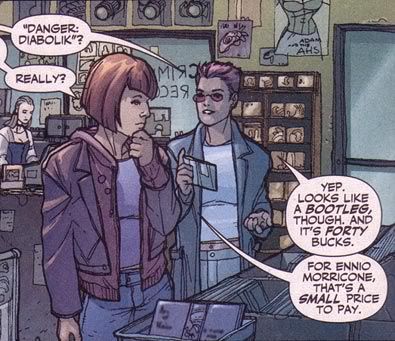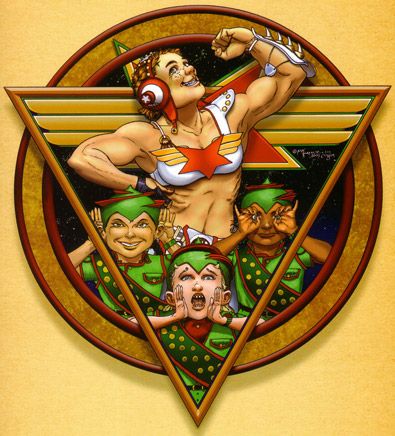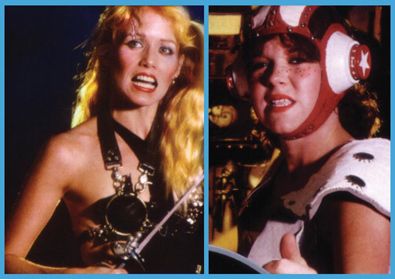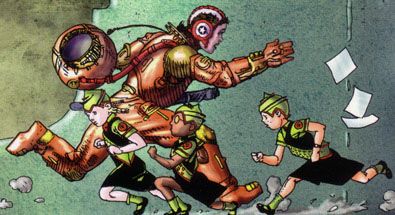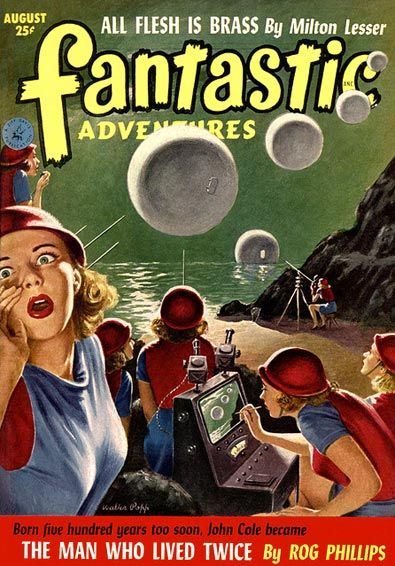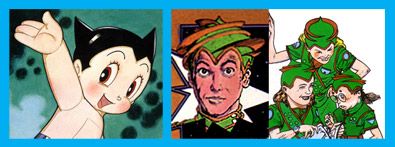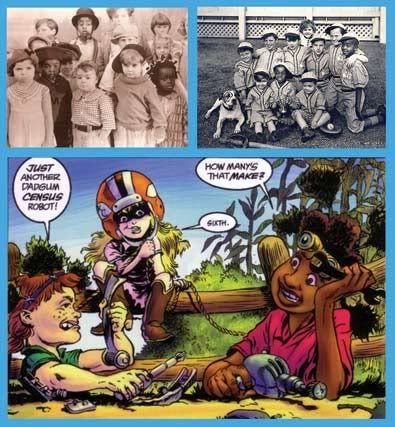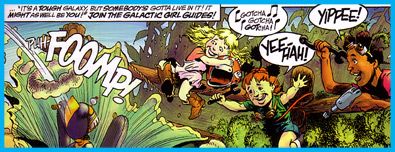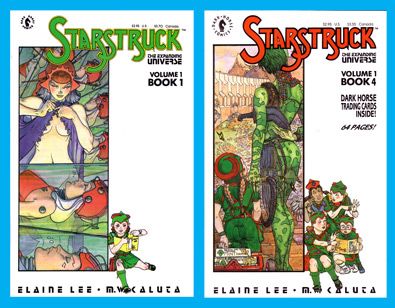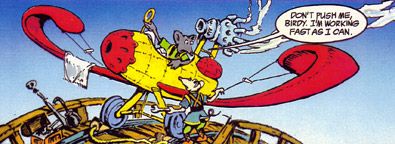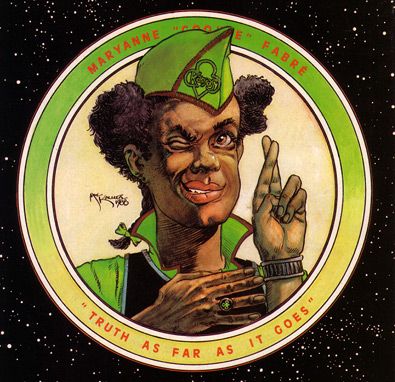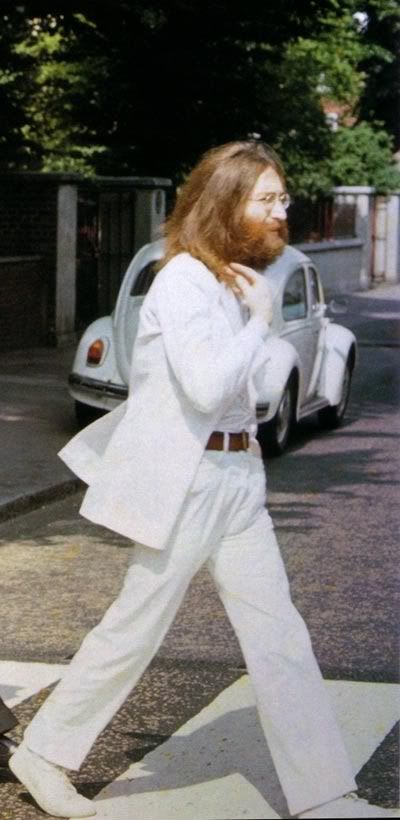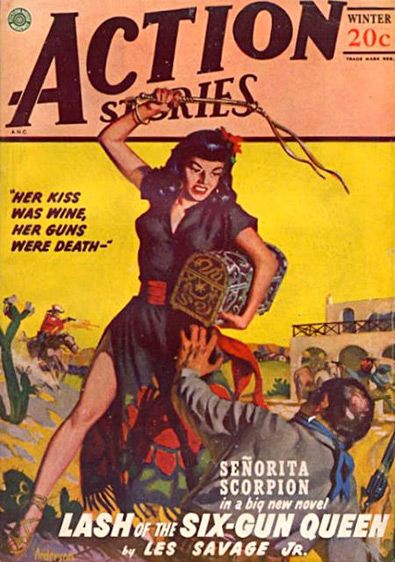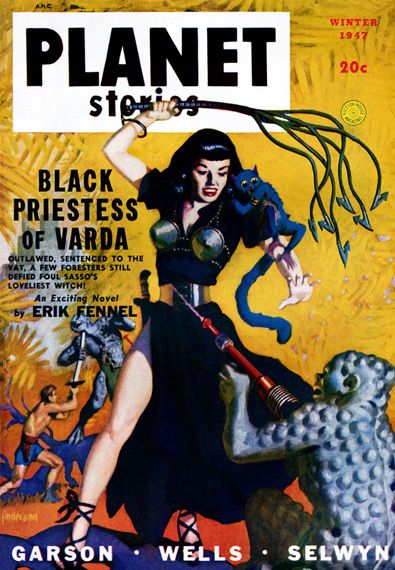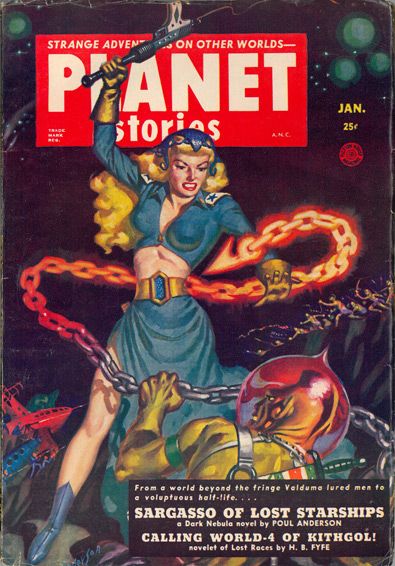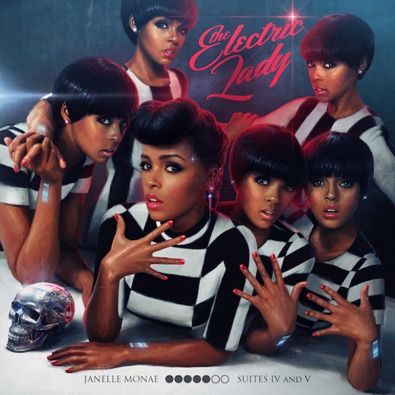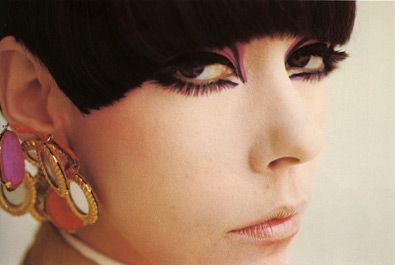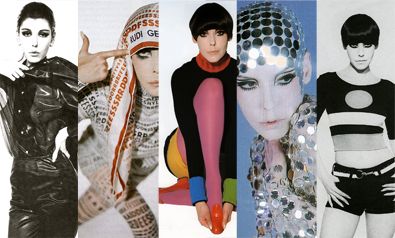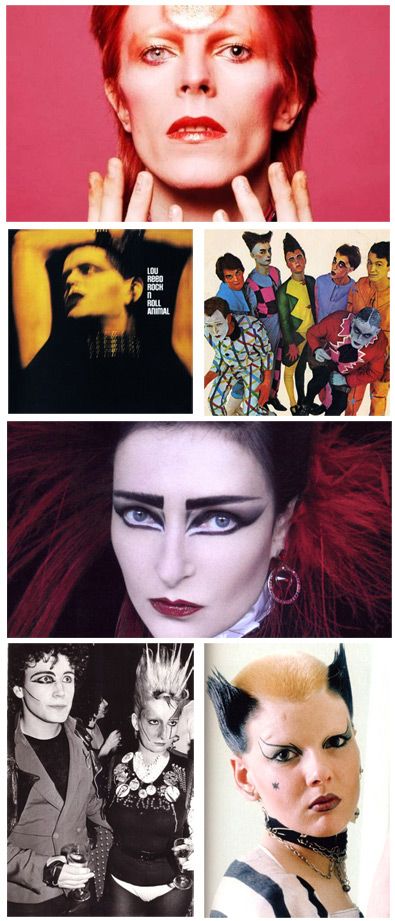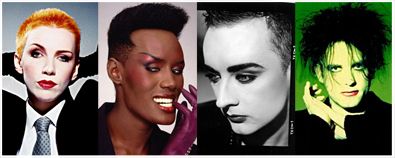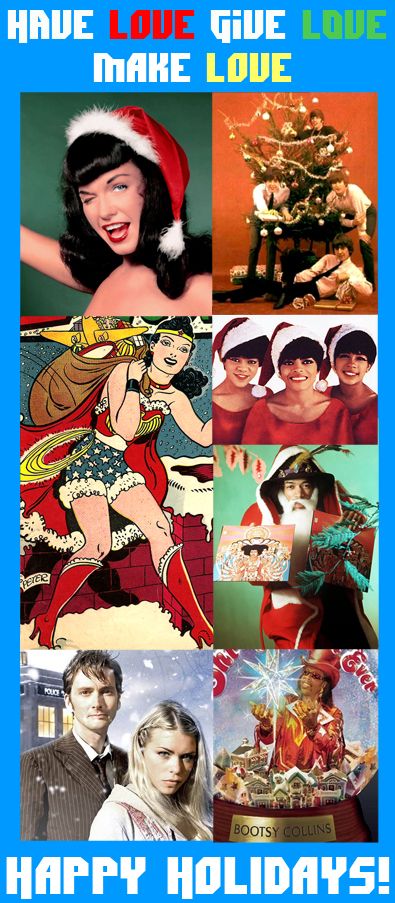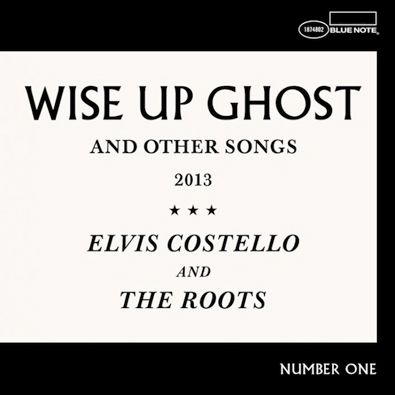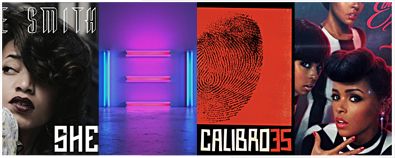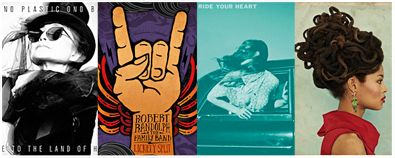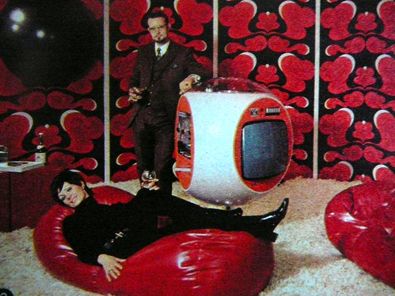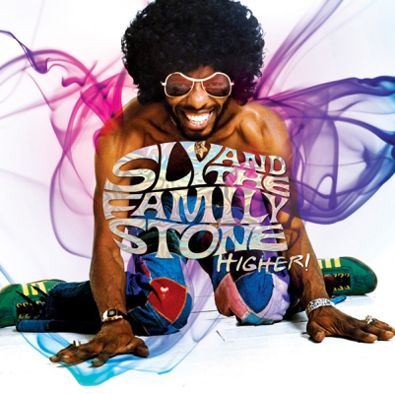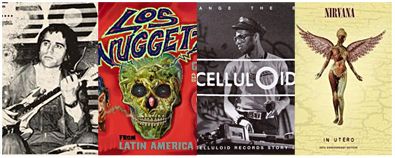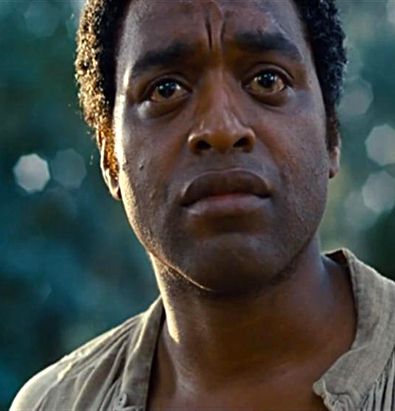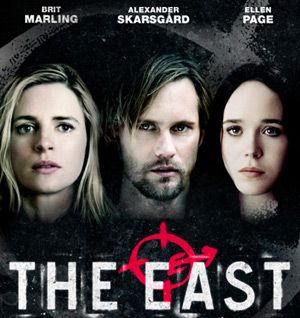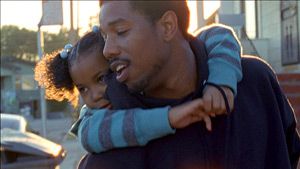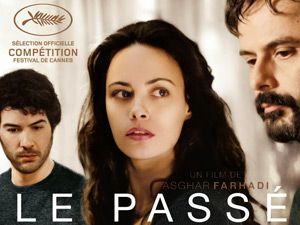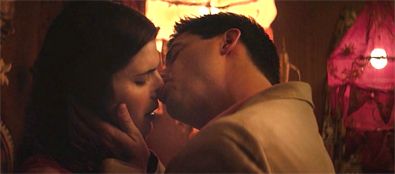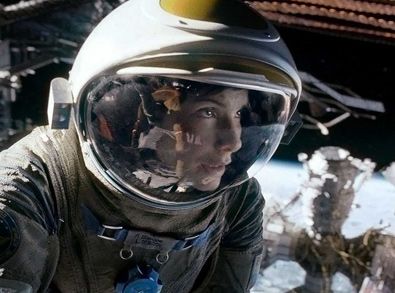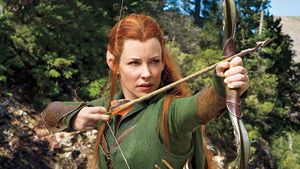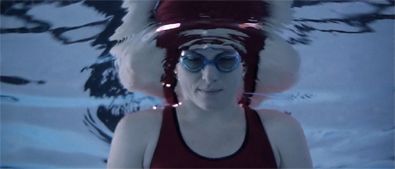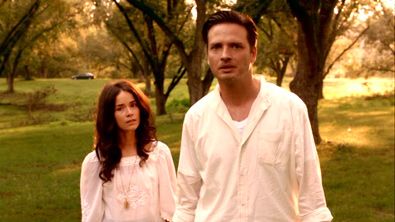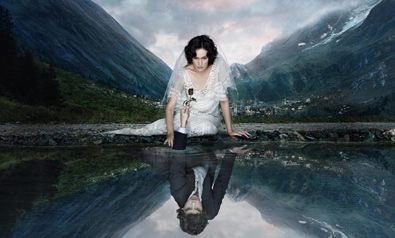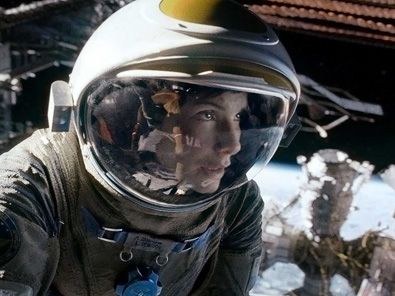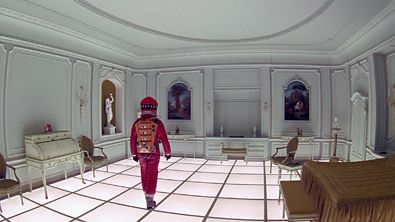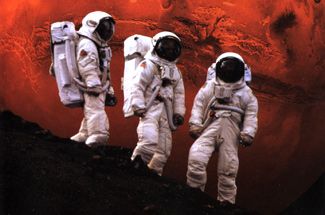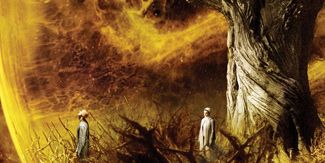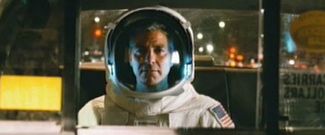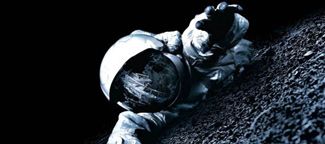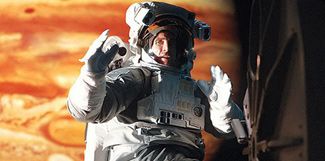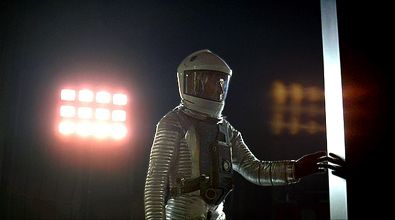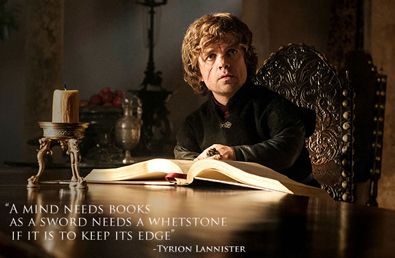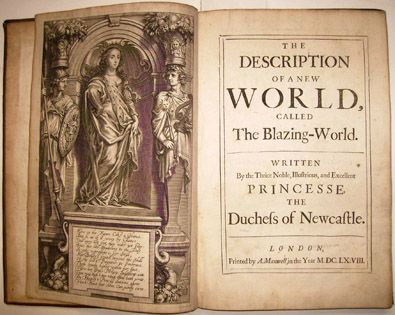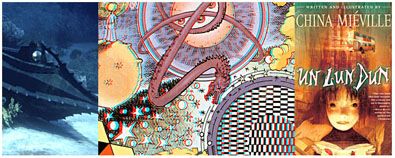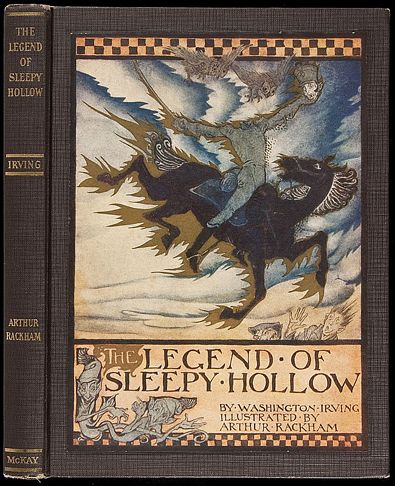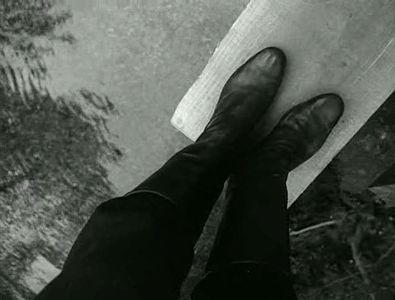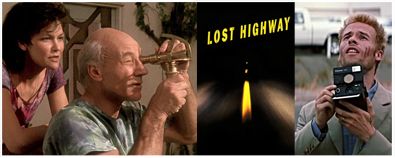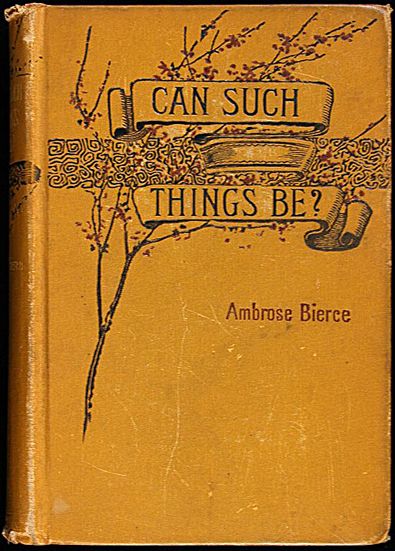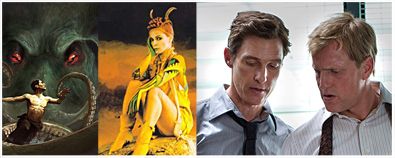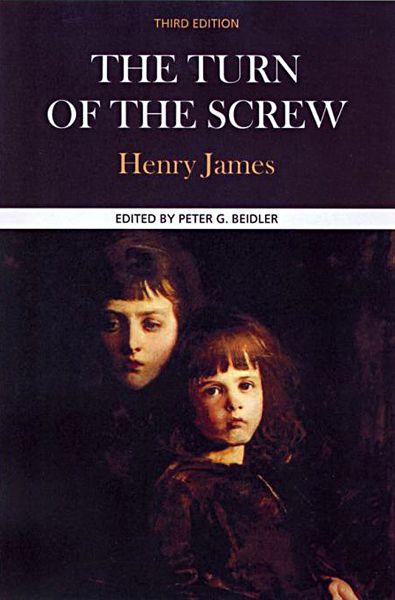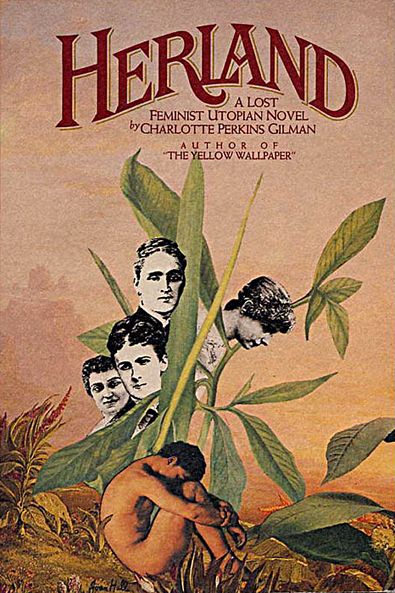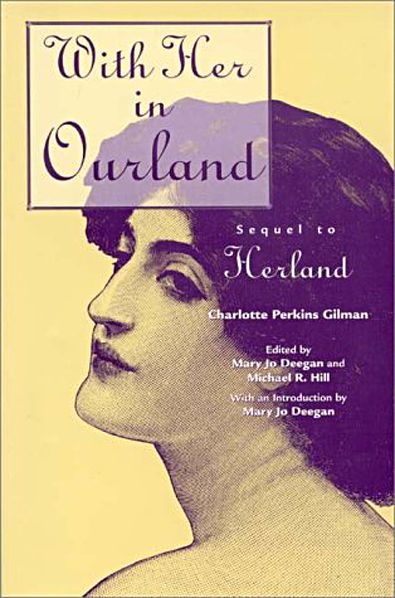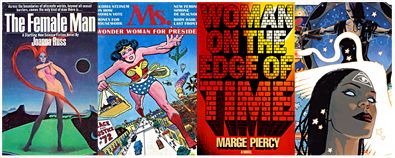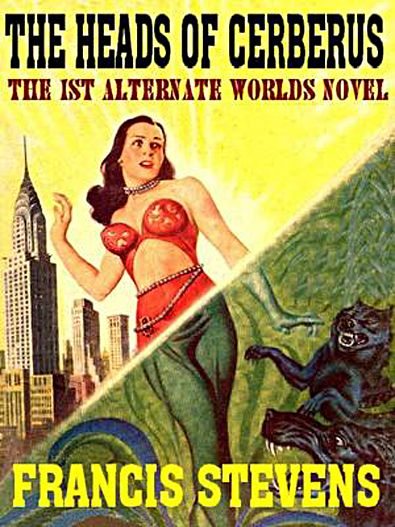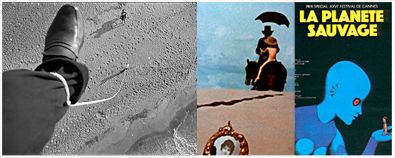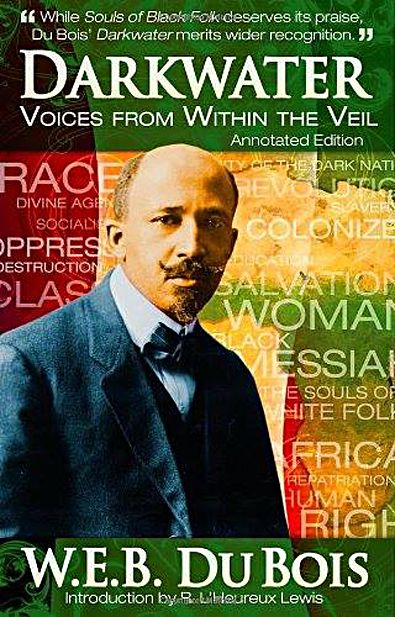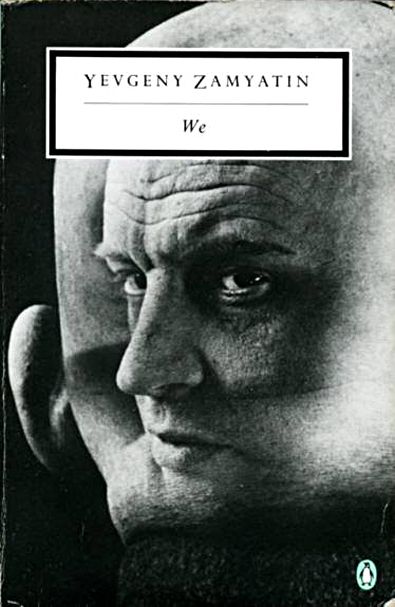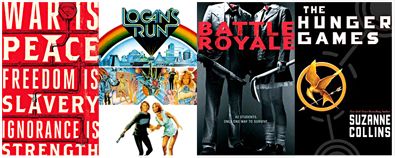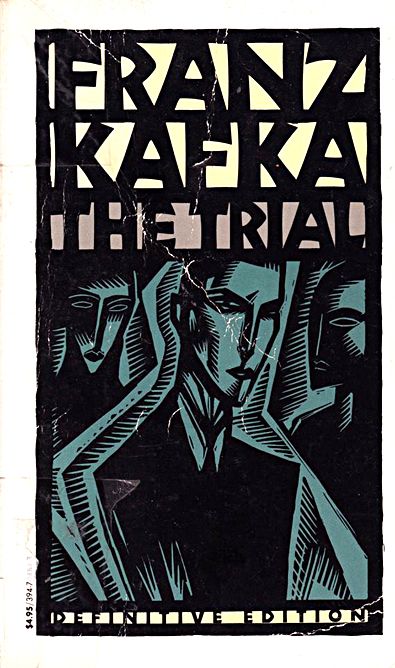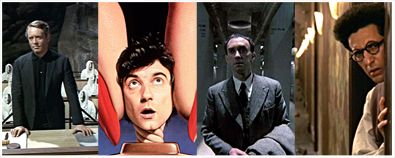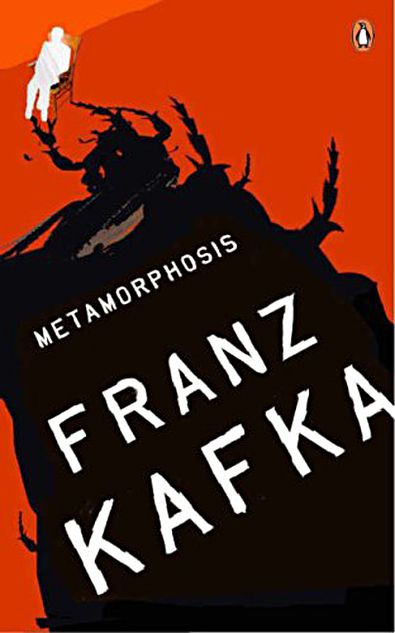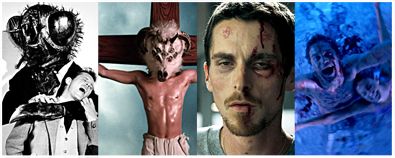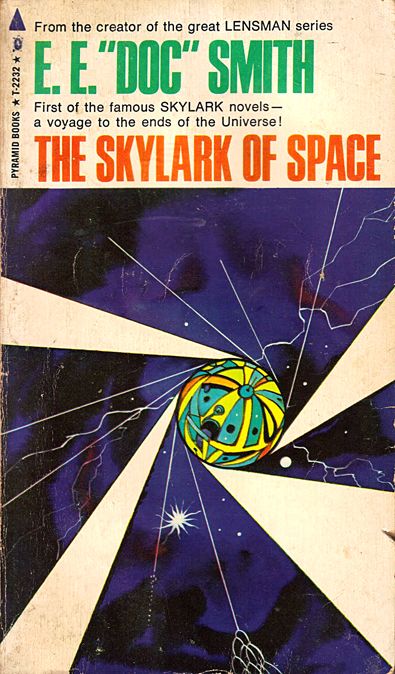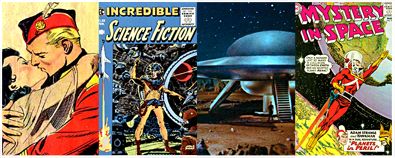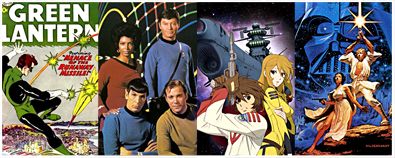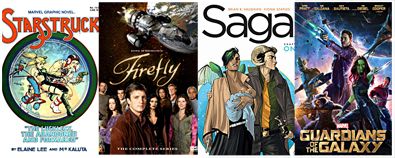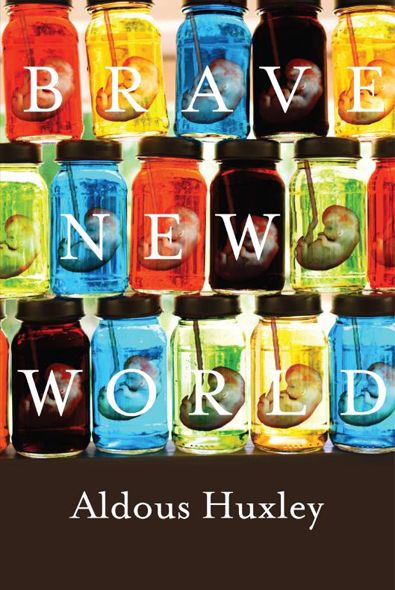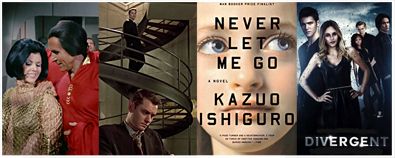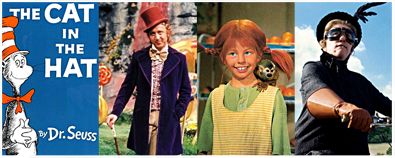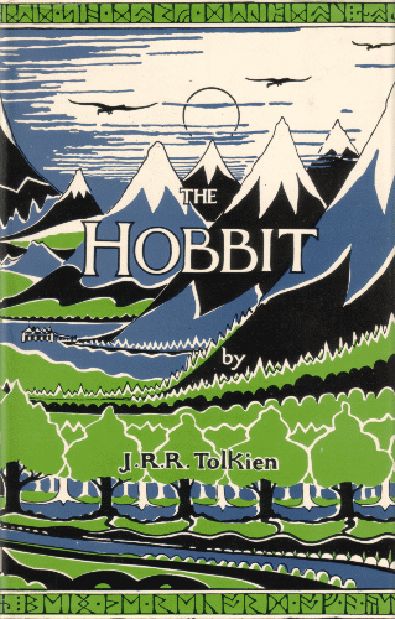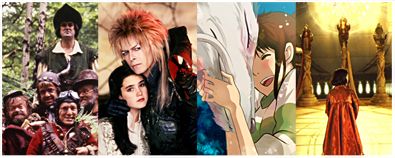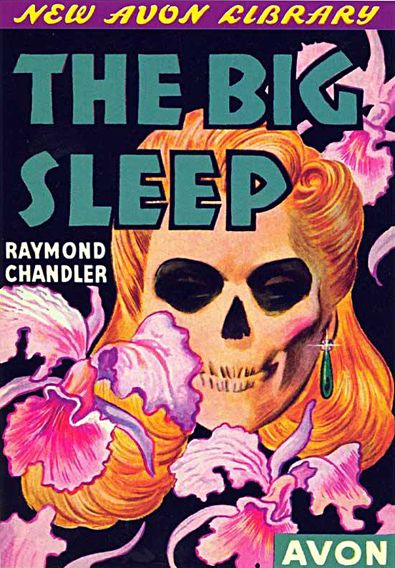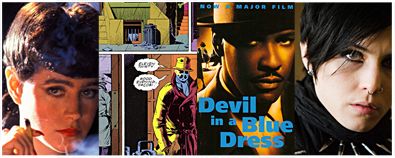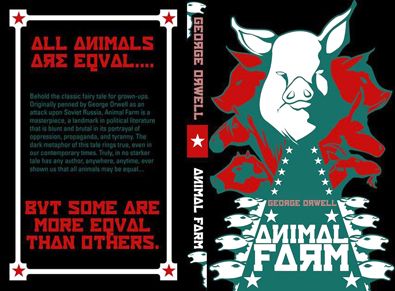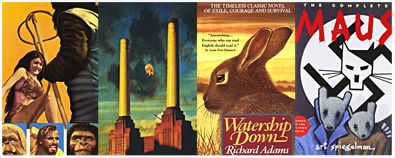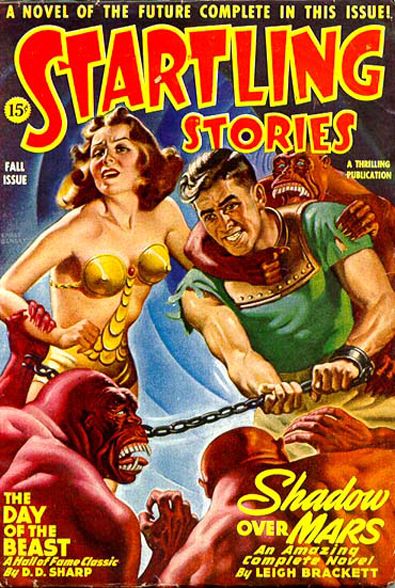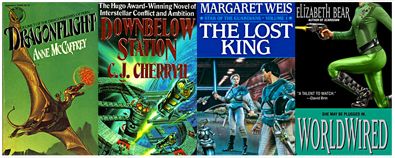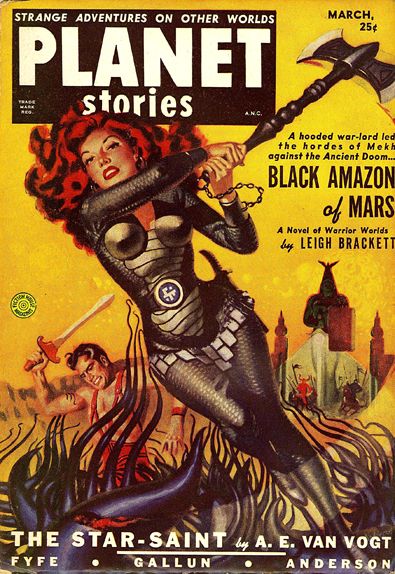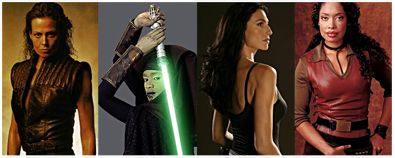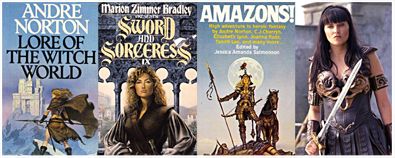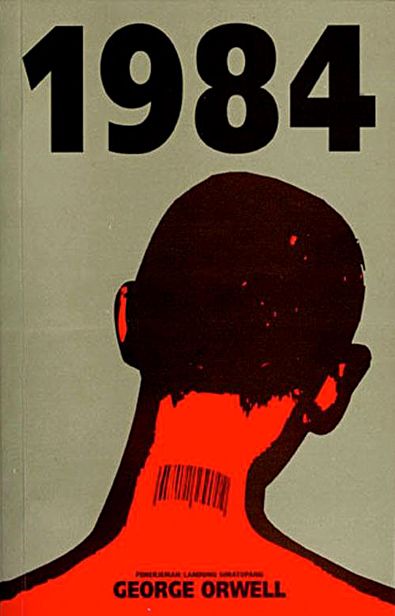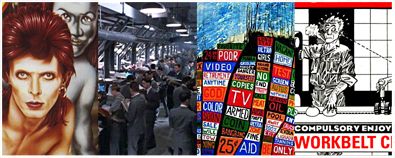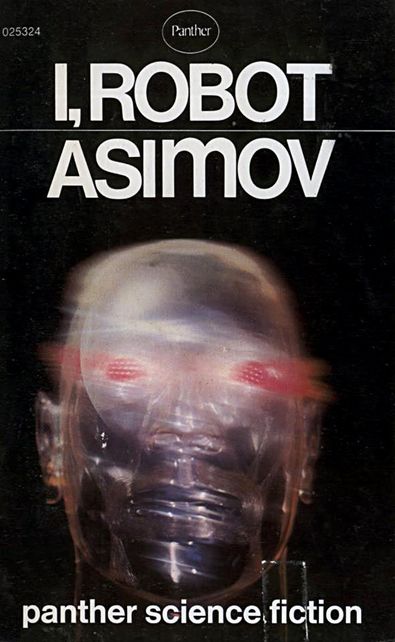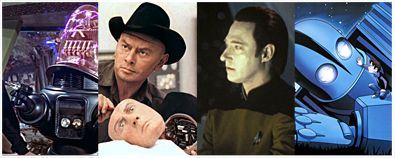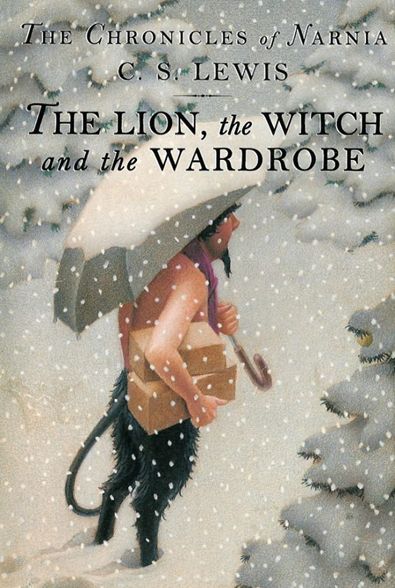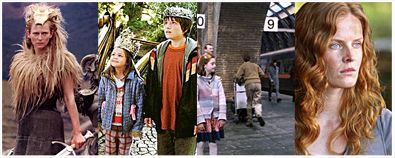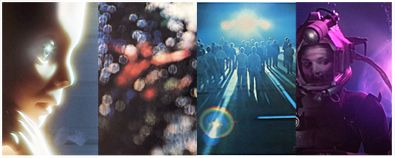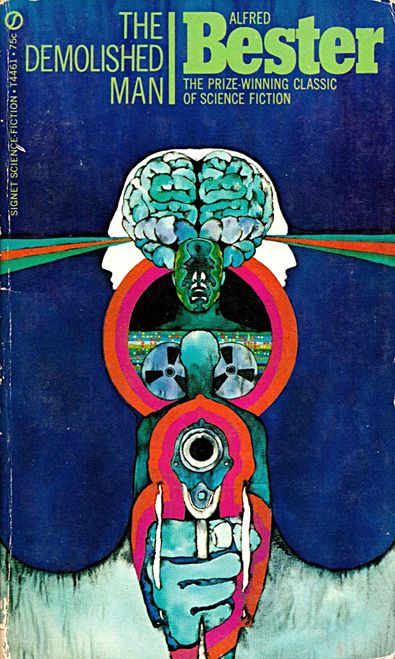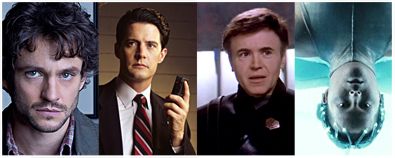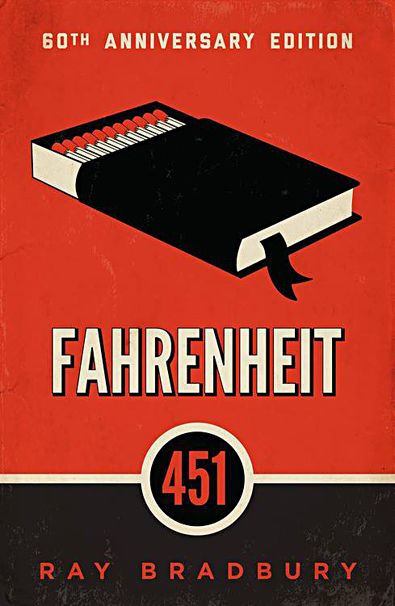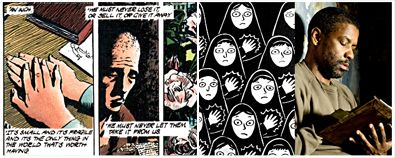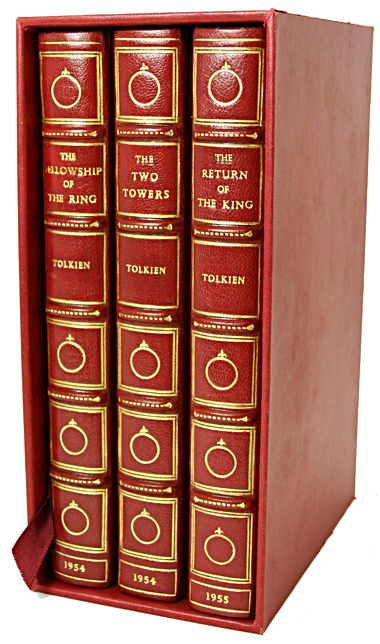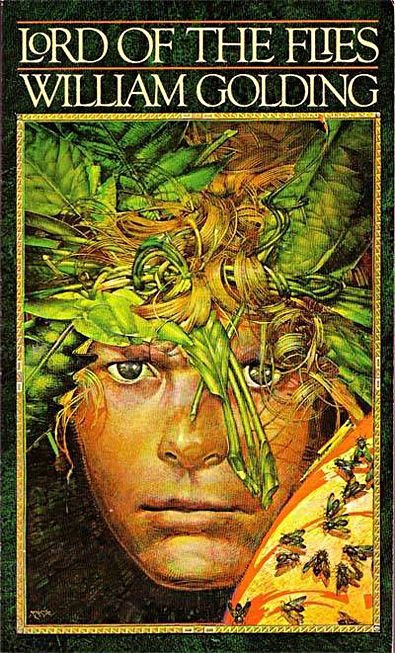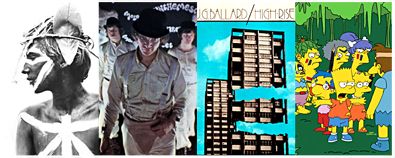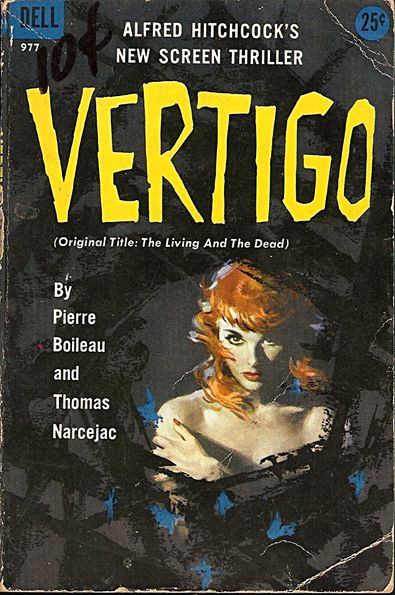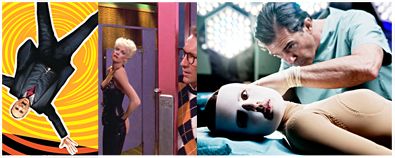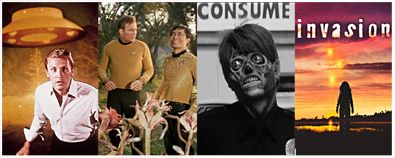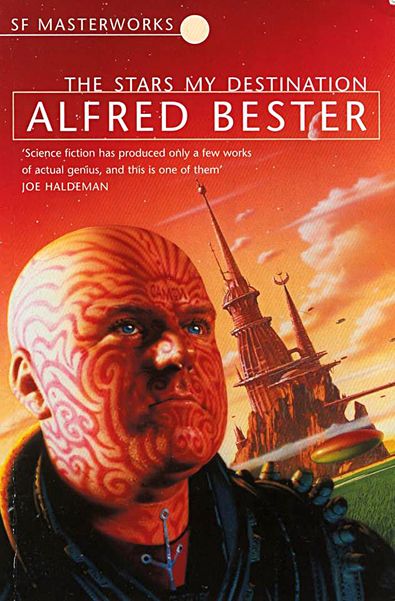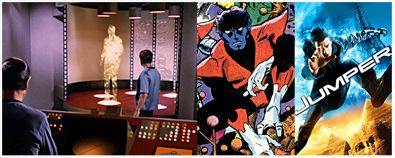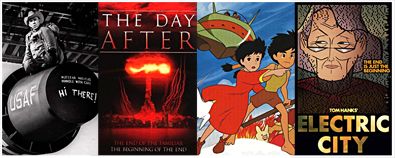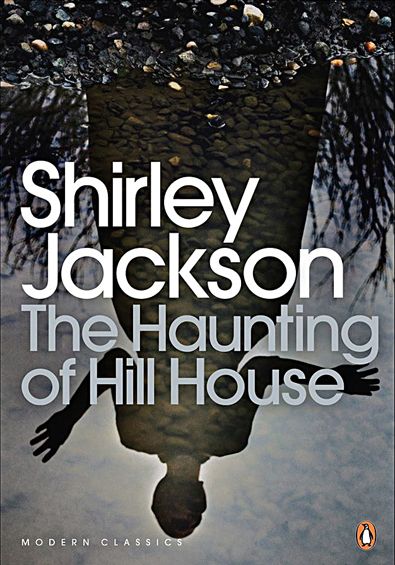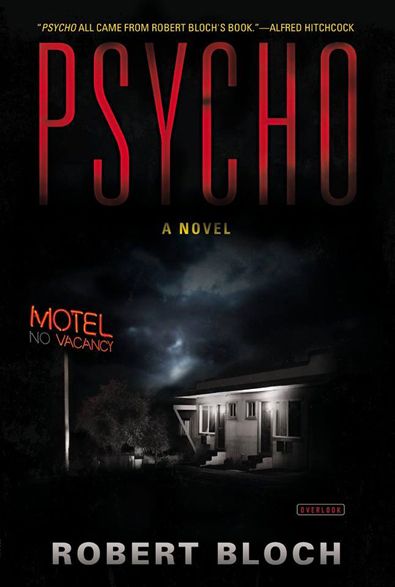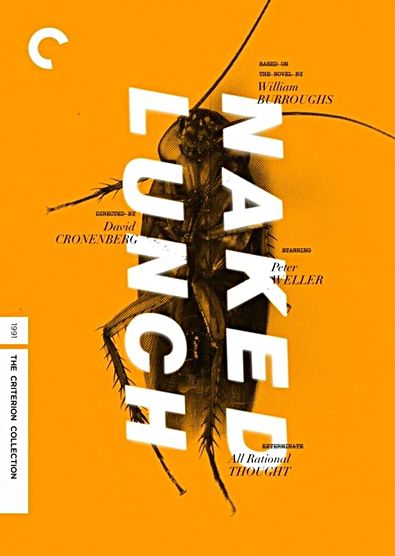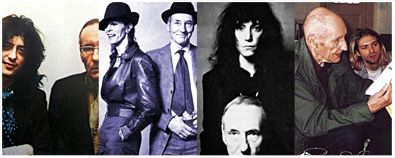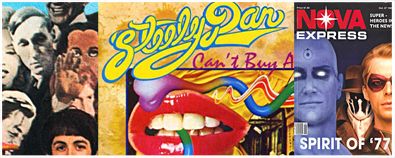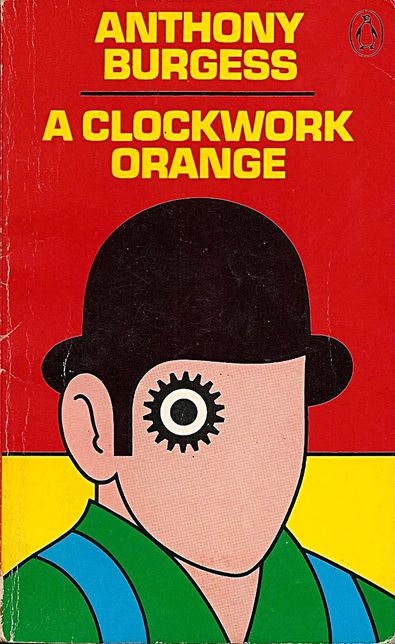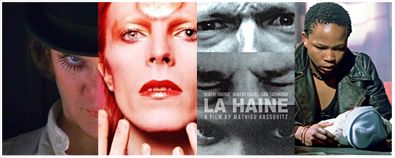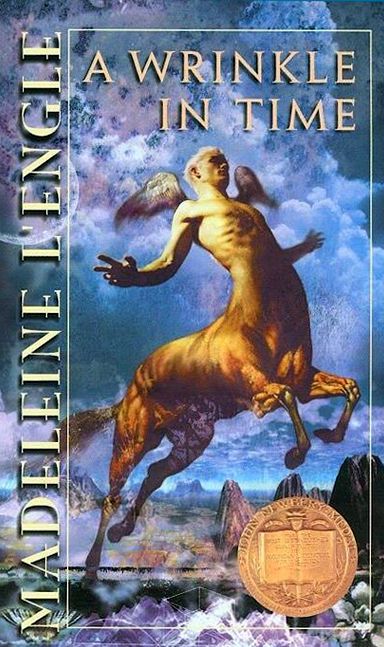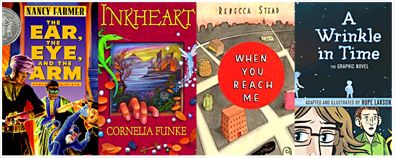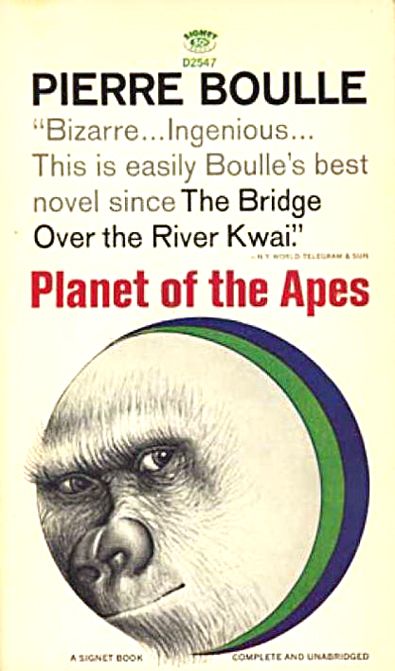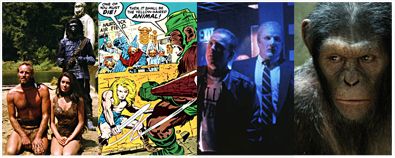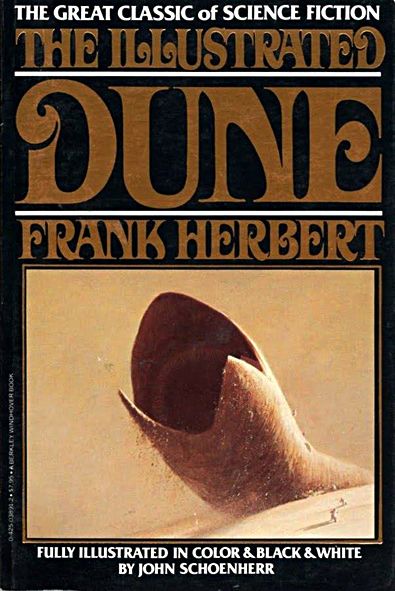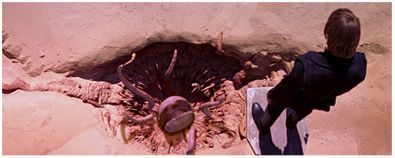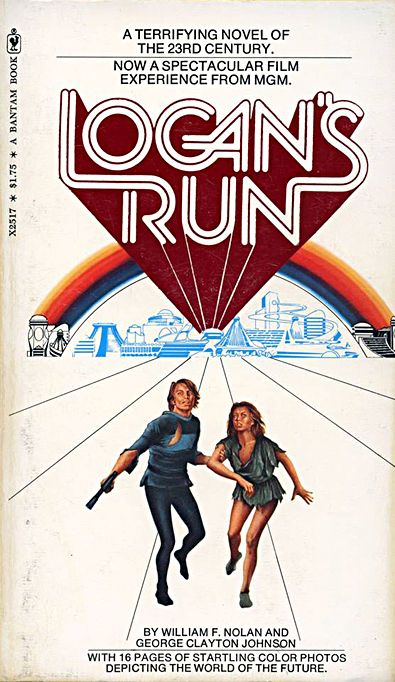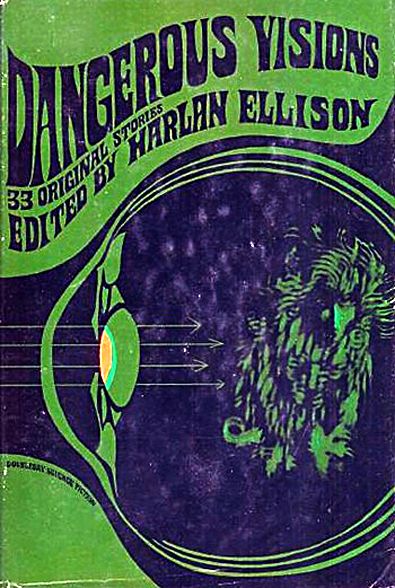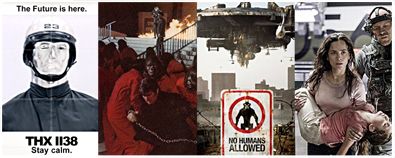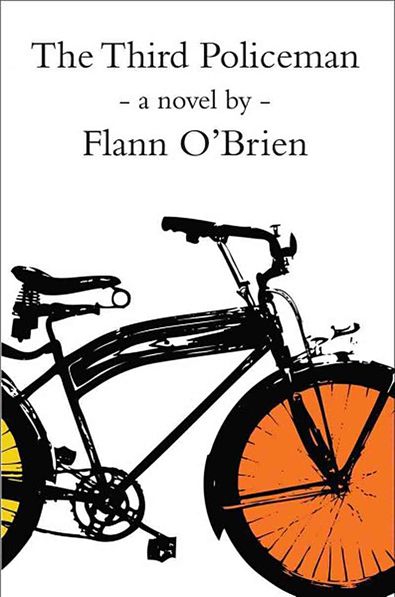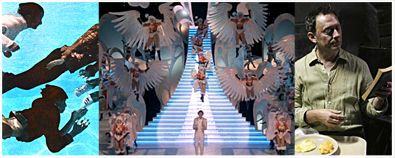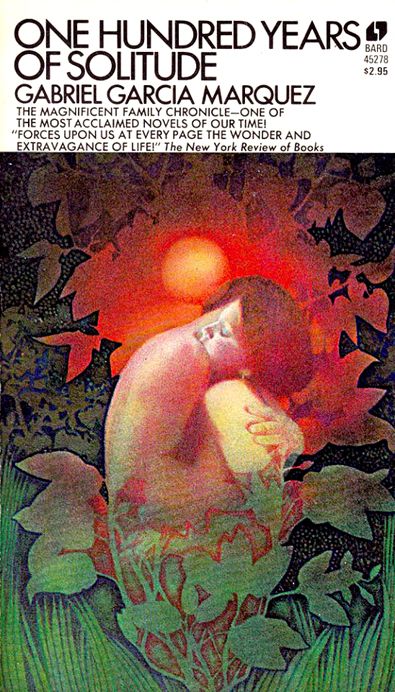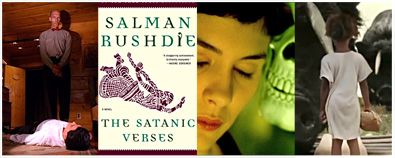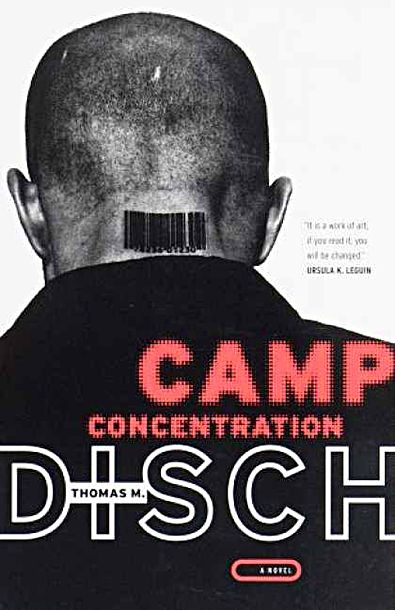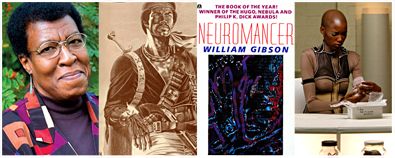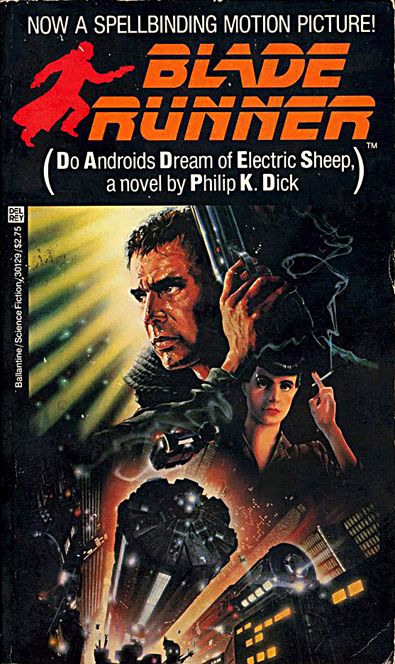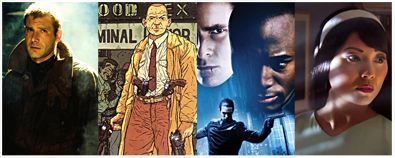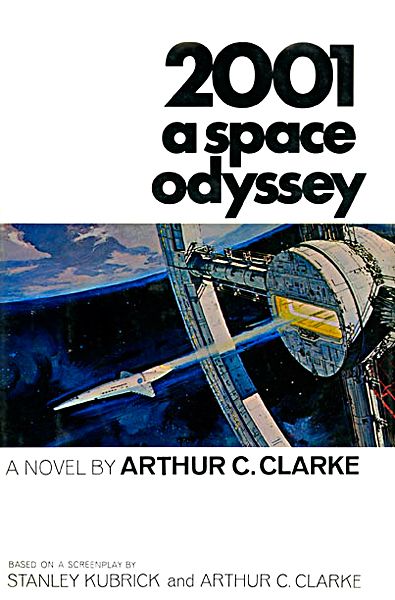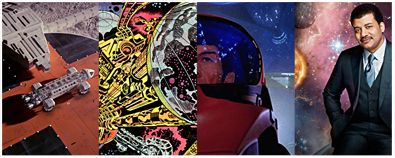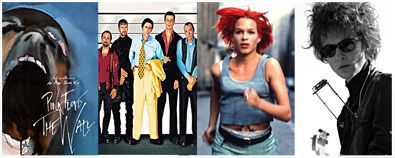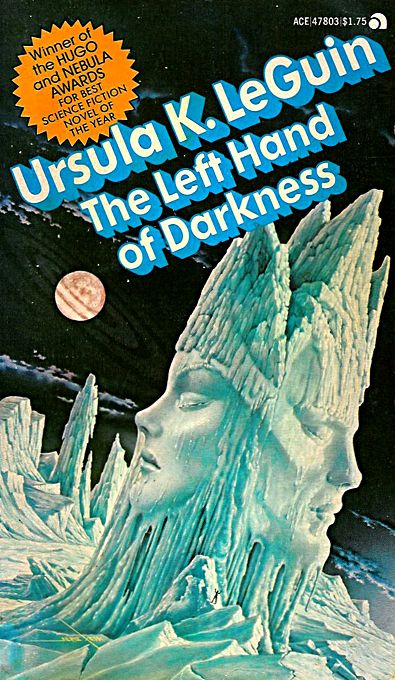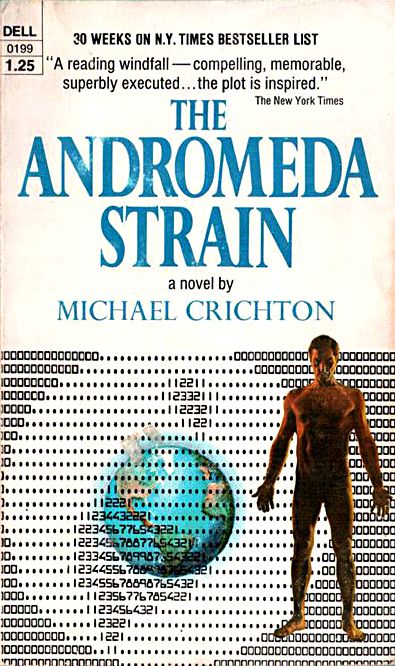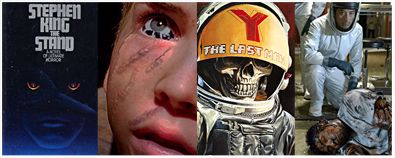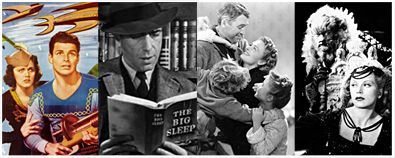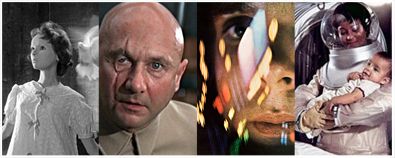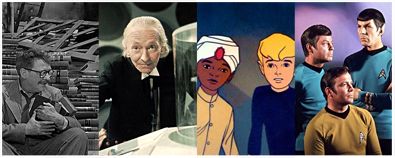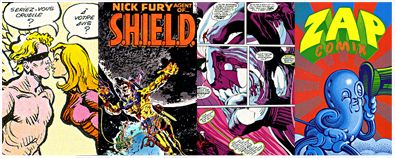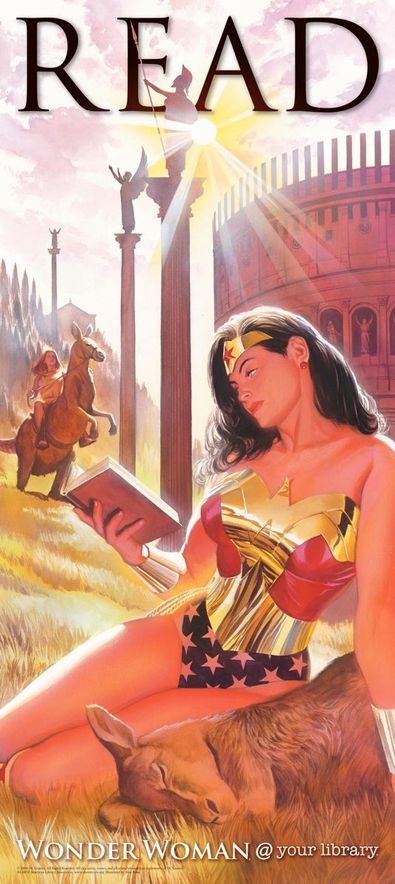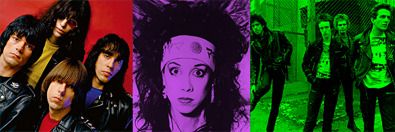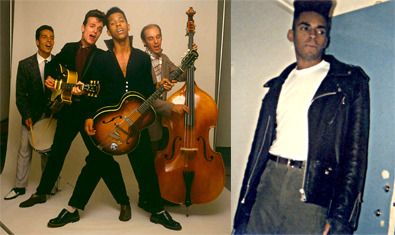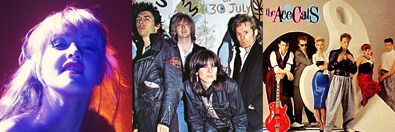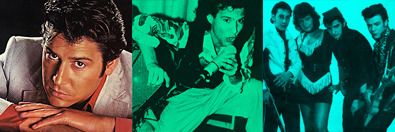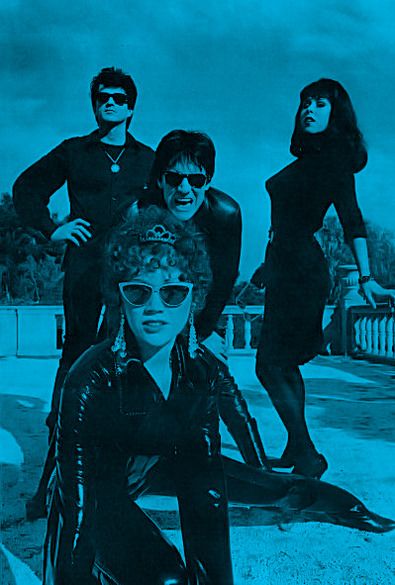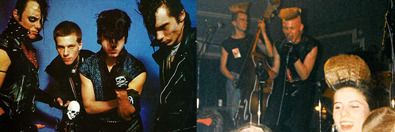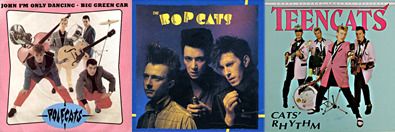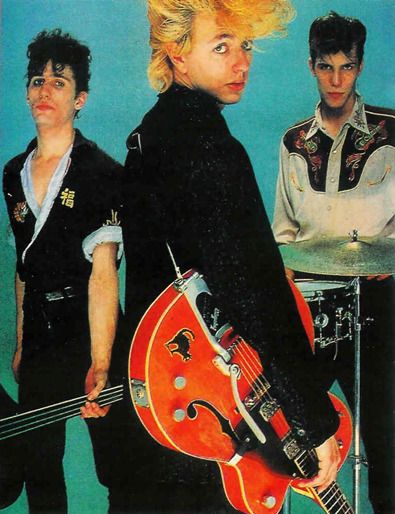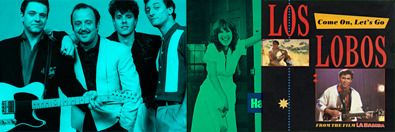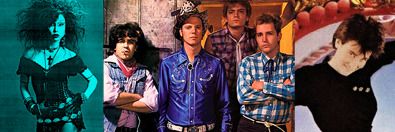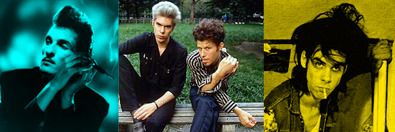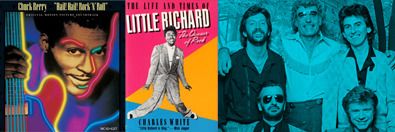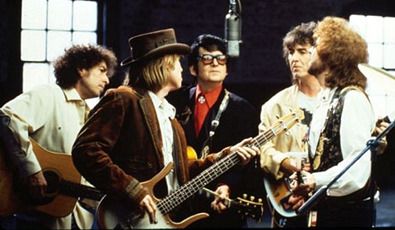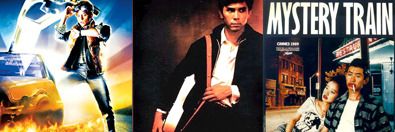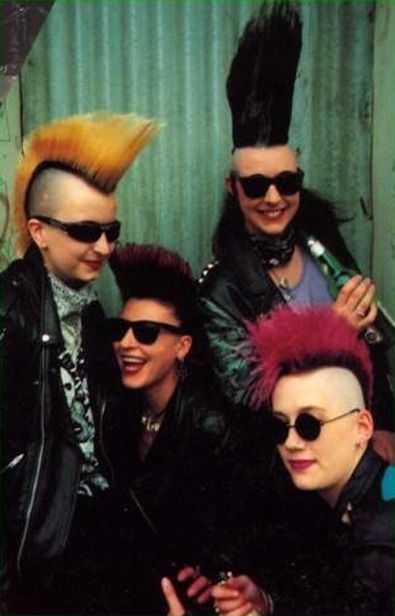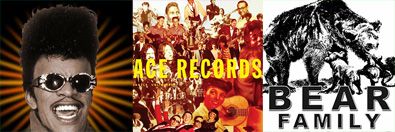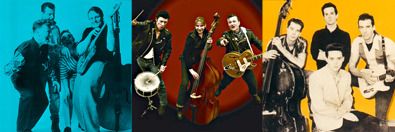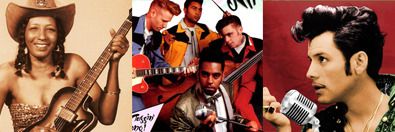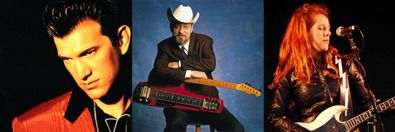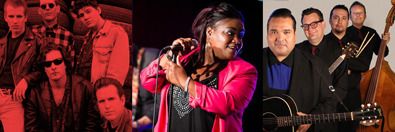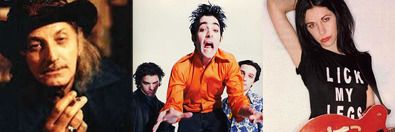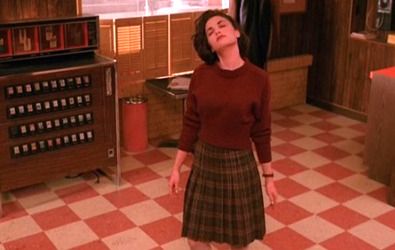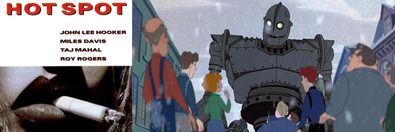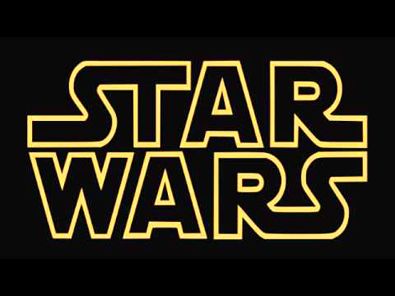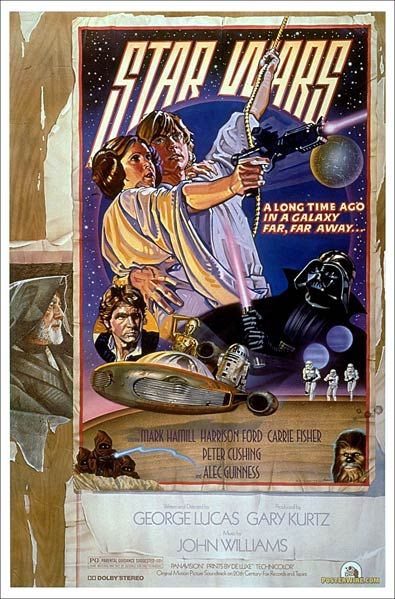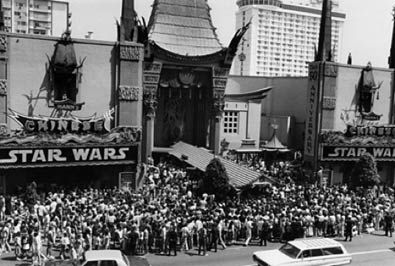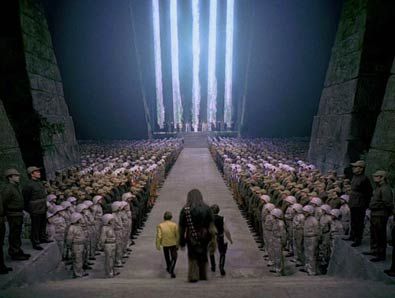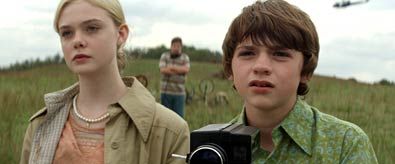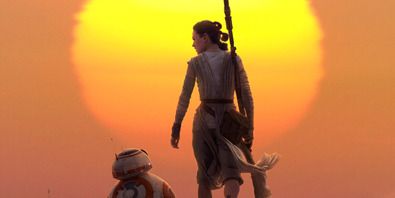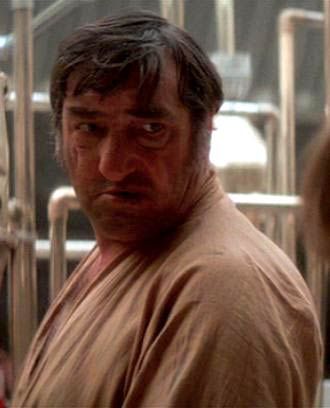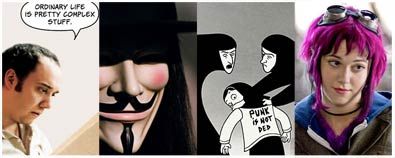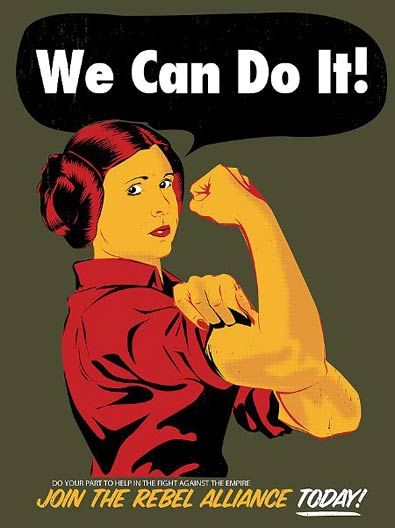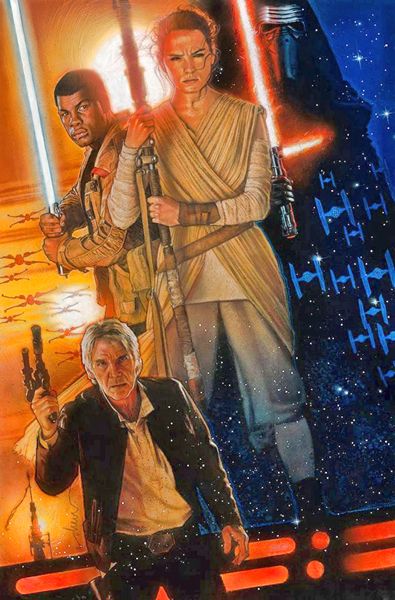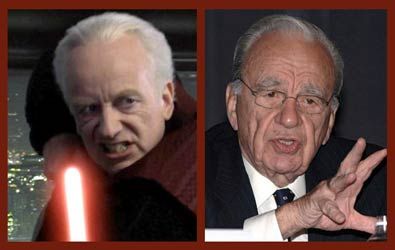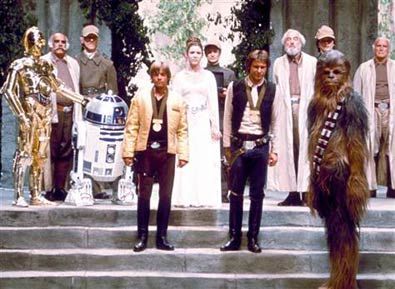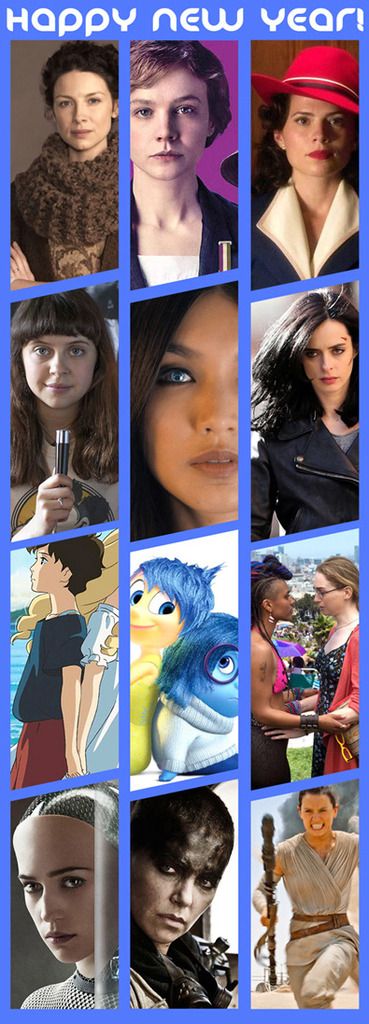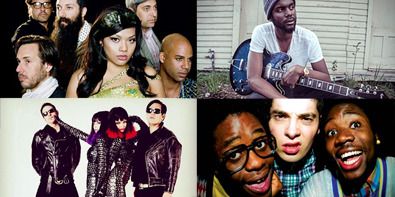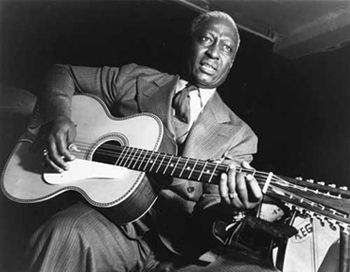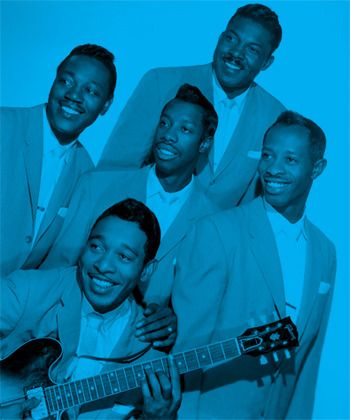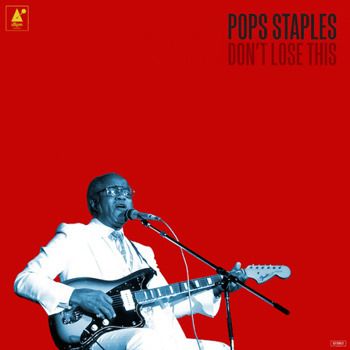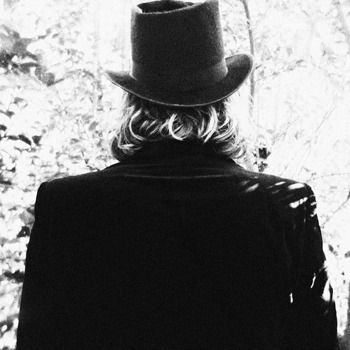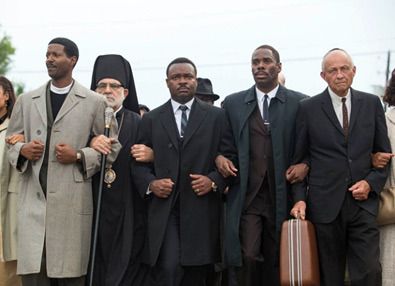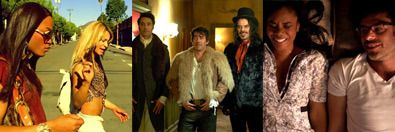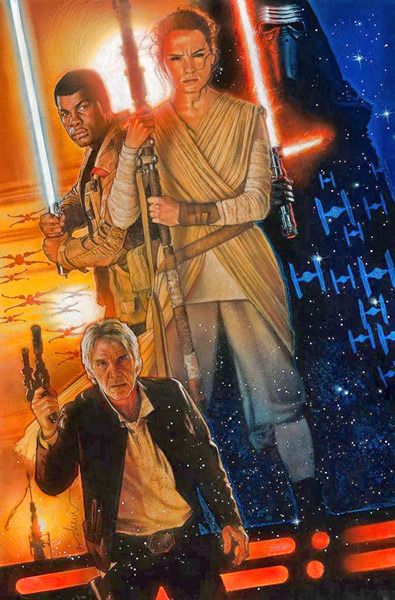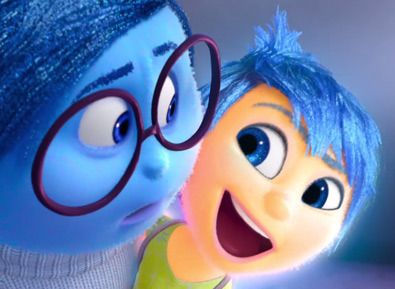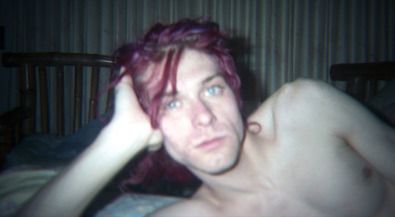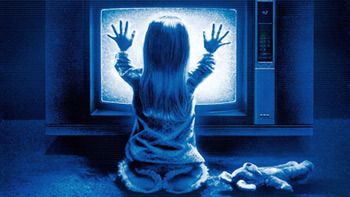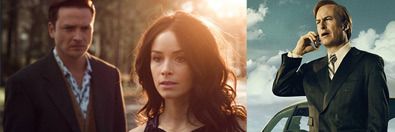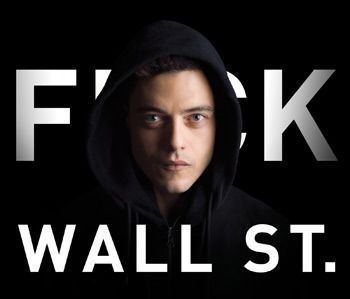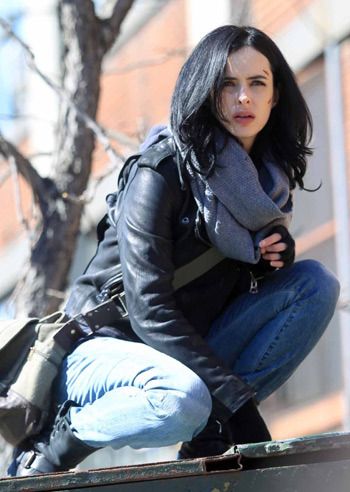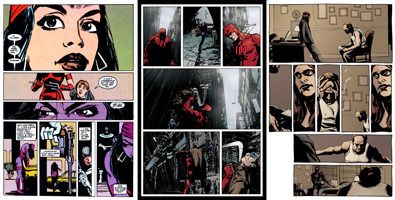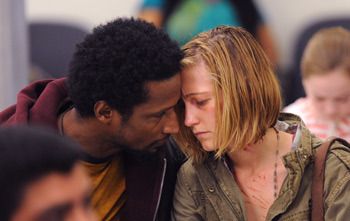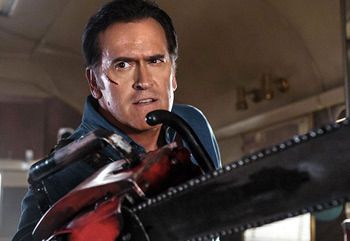... with Music Player! Art by Gene HaTHE CANON 2
(of Genre Fiction)Alternate realities! Headless horsemen!
Subjective perception! Alien demons!
Abstract horror! Feminist utopias!
Evil dystopias! Afrofuturism!
Space Opera! Eugenics! Magic guides!
Private Eyes! Space amazons! Robot laws!
Narnia! Middle Earth! Psychic detectives!
Feral kids!
Pod people! Teleporting! Psycho killers!
Alien messiahs! Tesseracts! Ape planets!
Magic realism! New Wave SF! Starchild! Contagion!In chronological order, here are key books where many of our modern legends come from...
1-910-1920-2930-3940-4950-55Music Player!*
Caveat Dept.:
1) This is an entry primer for Speculative Fictions.
2) This is an Alternate Lit List for alternate minds.
3) This is about Fun, so have some!The Canon 1 focused on 50 crucial genre classics from the 18th Century up to the Pulp era, circa 1940.
The Canon 2 focuses mainly on the 1940's to 1970, from the Golden Age to the New Wave of Science Fiction. It also spotlights female and multicultural authors who deserve more illumination.
1)
THE BLAZING WORLD,
by Margaret Cavendish (1666)The Other Realm.The Grandmother of Science Fiction.
The Duchess of Newcastle, author and scientist, invents a parallel realm of talking animals who use submarines.
Leads to:- ★ Actual submarines!
>>> Verne's "
20,000 Leagues Under the Sea"; Carroll's "
Alice's Adventures in Wonderland"; Lewis'"
Narnia" books; The Blazing World in Moore and O'Neill's "The League of Extraordinary Gentlemen"; Mieville's "
Un Lun Dun".
Additional Classics:
-LE MORTE D'ARTHUR, by Sir Thomas Malory (1485)
-THE INGENIOUS GENTLEMAN DON QUIXOTE OF LA MANCHA, by Miguel de Cervantes Saavedra (1605)
-BEAUTY AND THE BEAST (La Belle et la Bête), by Gabrielle-Suzanne Barbot de Villeneuve (1740)
-THE MYSTERIES OF UDOLPHO, by Ann Radcliffe (1794)
2) THE LEGEND OF SLEEPY HOLLOW,
by Washington Irving (1820)The avenging spirit.Cover by Arthur Rackham, 1920.Irving invents American Gothic.
Leads to:>>> The Green Goblin; Ghost Rider; the headless motorcyclist on 'Kolchak: The Night Stalker'; the village haunts of 'Twin Peaks'; Burton's 'SLEEPY HOLLOW' (1999); 'Sleepy Hollow' series (2013).
Also Read:-"
Rip Van Winkle", by Washington Irving (1819)
3) "An Occurrence at Owl Creek Bridge",
by Ambrose Bierce (1890)Subjective reality.Still frame from "La Riviere du Hibou", (1964)What is reality? What is perception? What is time?
Leads to:- The French film adaption "La Riviere du Hibou" gained international fame when broadcast on 'The Twilight Zone' in 1964.
>>> Perception stories like: Kurosawa's 'RASHOMON' (1950); Vonnegut's "
Slaughterhouse-Five"; Star Trek: The Next Generation's "The Inner Light"; Star Trek: Deep Space Nine's "Hard Time"; Lynch's 'LOST HIGHWAY' (1997); 'RUN LOLA RUN' (1998); 'THE SIXTH SENSE' (1999); Nolan's 'MEMENTO' (2000) and 'INCEPTION' (2010); 'INTO THE VOID' (2009).
Also Watch:--'LA RIVIERE DU HIBOU' / An Occurrence at Owl Creek Bridge (1964)
4) CAN SUCH THINGS BE?,
by Ambrose Bierce(1893)The horror story.Bierce splices the horror of Poe with the wit of Twain to create the modern horror short story.
Leads to:>>> Fitzgerald's "
The Curious Case of Benjamin Button"; EC Comics'"Tales From the Crypt", "The Haunt of Fear", "The Vault of Horror", etc.; 'The Twilight Zone'; 'The Outer Limits'; 'One Step Beyond'; 'Night Gallery'; "Eerie", "Creepy", and "Vampirella" magazines; DC Comics'"House Of Mystery" and "House of Secrets"; 'Trilogy of Terror' (1975) with Karen Black; Dahl's 'Tales of the Unexpected' series; 'Tales From the Darkside'; 'Tales From the Crypt' series.
5) THE KING IN YELLOW,
by Robert W. Chambers(1895)Demon gods.Chambers expands on Bierce, presaging Lovecraft.
(Only the first four stories reference the
King In Yellow mythos.)
Leads to:-Chamber's use of short stories haunted by a peripheral extradimensional mad god impressed H.P. Lovecraft into developing his Cthulhu mythos.
- "
The King In Yellow" stories have inspired mentions in the work of Raymond Chandler, Robert Silverberg, Robert Heinlein, James Blish, Lin Carter, Marion Zimmer Bradley, and Stephen King.
-"
The King In Yellow" gained popular revitalization with the success of HBO's 'True Detective' (Season 1, 2014).
>>> Blue Oyster Cult's song "E.T.I. (Extra Terrestrial Intelligence)" and Toyah Wilcox's "The Gift"; Metal songs by Anaal Nathrakh, Ancient Rites, and Root.
Also Watch:--'True Detective', Season 1
6) THE TURN OF THE SCREW,
by Henry James(1898)Subjective horror.Cover painting, "Brother and Sister" by Abbot Handerson Thayer, 1889.What lies beneath?
Leads to:>>>'UGETSU' (1953); Jackson's "
The Haunting of Hill House"; 'Dark Shadows'; the prequel 'THE NIGHTCOMERS' (1971); 'DON'T LOOK NOW' (1973); 'THE CHANGELING' (1980); Kate Bush's "The Infant Kiss"; Crepax's "Giro di Vite" graphic novel; 'THE OTHERS' (2001).
Also Read:-The inverted short story "
Accursed Inhabitants of the House of Bly", by Joyce Carol Oates
Also Watch:--'THE INNOCENTS' (1961)
Clayton's film adaption.
--'THE OTHERS' (2001)
Additional Classics:
-A CONNECTICUT YANKEE IN KING ARTHUR'S COURT, by Mark Twain (1889)
-OF ONE BLOOD, by Pauline Hopkins (1902)
7) HERLAND,
by Charlotte Perkins Gilman(1915)The feminist utopia.Gilman, most famous for the feminist essay "
The Yellow Wallpaper", imagines a secluded society of superwomen, self-sustained and ideologically progressive.
Leads to:-Herland is an idyllic utopia hidden from men, forged and maintained by pacifist amazons. This is an exact template for Wonder Woman and Paradise Island.
-Gilman's parthenogenetic society anticipates Anderson's "
Virgin Planet"; as well as genderless realms like Sturgeon's "
Venus Plus X", Le Guin's "
The Left Side of Darkness", Moto Hagio's "Marginal" manga, and Constantine's "
Wraeththu" books.
>>> Moulton and Peter's "Wonder Woman"; Moore and Williams'"Promethea".
Also Read:-"
With Her In Ourland", by Charlotte Perkins Gilman (1916)
The even more crucial sequel.
8) WITH HER IN OURLAND,
by Charlotte Perkins Gilman(1916)Feminist ambassador.Gilman prescribes feminist solutions for an equitable world that could still help us a century later.
Leads to:- Feminist Utopias in the works of Elizabeth Mann Borghese, John Wyndham, Joanna Russ, Doris Lessing, and Suzy McKee Charnas.
-Gilman's heroine is an ambassador from matriarchal Herland offering ideas of equity to the patriarchal world. This prefigures Wonder Woman's similar mission, and the cosmic expansion of it by Promethea.
>>> Joanna Russ'"
The Female Man"; Marge Piercy's "
Woman On the Edge of Time"; Le Guin's "
The Left Hand of Darkness".
Also Read:-"
Herland", by Charlotte Perkins Gilman (1915)
9) THE HEADS OF CERBERUS,
by Francis Stevens(1919)Dystopias, alternate realms and timelines.Stevens (Gertrude Barrows Bennett) creates a future dystopia before Zamyatin, as well as an alternate realm based on Fantasy before Lewis, and alternate timelines that need reversing. Phew!
Leads to:- Stevens was an early pioneer of women writing Science Fiction and Fantasy pulps, along with C.L. Moore, Clare Winger Harris, Sylvia Townsend Warner, and Zenna Henderson. They ushered the way for Leigh Brackett, Katherine MacLean, Andre Norton, Margaret St. Clair, and more.
>>> Zamyatin's "
We"; Huxley's "
Brave New World"; Orwell's "
1984"; C.S. Lewis'"
Narnia" books; Star Trek's "The City On the Edge of Forever"; 'STARGATE' (1994); 'Quantuum Leap', 'Sliders', 'Fringe', and 'Continuum'; Fforde's "
Tuesday Next" novels; 'X-MEN: Days of Future Past' (2014).
10)
A VOYAGE TO ARCTURUS,
by David Lindsay(1920)Subjective odyssey.This surreal, symbolic, obtuse cross of "
Pilgrim's Progress" and "
Dante's Inferno" anticipates the New Wave of Science Fiction by over four decades.
Leads to:-Though barely available, the rare book impressed both C.S. Lewis and J.R.R. Tolkien.
>>> Similarly subjective journeys like Fellini's '8 1/2' (1963); Lem's "
Solaris"; '2001: A SPACE ODYSSEY' (1968); 'EL TOPO' (1970); 'FANTASTIC PLANET' (1973); 'ZARDOZ' (1974); Bloom's sequel "
A Flight To Lucifer"; 'Twin Peaks'.
11) "The Comet",
by W.E.B. Dubois(1920)The future of humanity.Will we soar together into the future with progress, or sink separately in regress?
The great activist and historian caps his book "
Darkwater: Voices From Within the Veil" with this allegorical short story.
Leads to:>>> Afrofuturism; Sun Ra; Parliament-Funkadelic; Earth, Wind, and Fire; Grace Jones; Afrika Bambaataa; Bishop of the X-Men; Mr. Terrific; Janelle Monae.
12) WE,
by Yevgeny Zamyatin(1920)Dystopia.Counter to utopias like those envisioned by H.G. Wells, Zamyatin defines the possible dystopia from his disillusionment with Communism.
Russia censored him and exported him abroad, where he died.
Leads to:>>> All future dystopias, such as Huxley's "
Brave New World"; Orwell's "
1984"; Nolan and Johnson's "
Logan's Run"; Collins'"
The Hunger Games"; etc.
13) THE TRIAL,
by Franz Kafka(1925)Bureaucratic dystopia.You've done nothing wrong. Run.
Leads to:>>> Nabokov's "
Invitation To a Beheading"; McGoohan's 'The Prisoner'; 'DUEL' (1971); 'THE TENANT' (1976); Scorsese's 'AFTER HOURS' (1985); Gilliam's 'BRAZIL' (1985); the Coen's 'BARTON FINK' (1991); Lynch's 'INLAND EMPIRE' (2006); 'THE DOUBLE' (2013); 'ENEMY' (2014).
Also Watch:--'THE TRIAL' (1962)
Orson Welles' unsung classic.
14) THE METAMORPHOSIS,
by Franz Kafka(1925)Altered states.Absurdist transmutation. What is self? Where is empathy?
Leads to:>>>'THE FLY' (1958, 1986); Metamorpho the Element Man; 'ALTERED STATES' (1981); 'THE MACHINIST' (2004); 'BUG' (2006); Olsen's inverted version "
Anxious Pleasures: A Novel After Kafka".
Additional Classics:
-LOLLY WILLOWES, by Sylvia Townsend Warner (1926)
-AWAY FROM THE HERE AND NOW, by Clare Winger Harris (short stories, 1926-1930)
15) THE SKYLARK OF SPACE,
by E.E. "Doc" Smith(1930)Space Opera.In the same issue of "Amazing Stories" as the first Buck Rogers tale, Smith invents faster-than-light space travel and the basics of Pulp science fiction.
(Also all the colonial militarism that the Prime Directive would try to correct.)
Leads to:Space Opera.
-Flash Gordon; Asimov's "
Foundation" books; EC Comics; 'FORBIDDEN PLANET' (1956); Martian Manhunter; Captain Comet; Fox and Anderson's "Adam Strange"
-Broome and Kane's "Green Lantern"; Fox and Kubert's "Hawkman"; 'Doctor Who'; Perry Rhodan; Manning's "Magnus, Robot Fighter"; 'Star Trek'; Christen and Mezieres'"Valerian and Laureline"; Guardians of the Galaxy
-'Gatchaman' (a.k.a., Battle of the Planets) and 'Space Battleship Yamato' (a.k.a., Star Blazers); comics like Warlock, Monark Starstalker, Cody Starbuck, Killraven, Star-Lord, and Rocket Raccoon; Metal Hurlant and Heavy Metal magazines; 'STAR WARS' (1977); 'Battlestar Galactica'; 'Blake's 7'
-Lee and Kaluta's "
Starstruck", Golden's "Bucky O'Hare", 'Macross'; Starlin's "Dreadstar"; Jodorowsky and Moebius'"The Incal"; Rude's "Nexus"; 'Red Dwarf'
-Morioka's "
Crest of the Stars" books; 'Andromeda'; 'Farscape'; 'Cowboy Bebop'; Wing Commander games; 'GALAXY QUEST' (1999)
-'TITAN A.E.' (2000); Halo and Mass Effect games; 'Firefly' and 'SERENITY' (2005); Vaughan and Staples'"Saga"; 'GUARDIANS OF THE GALAXY' (2014).
Also Watch:--'STAR WARS' (1977)
16) BRAVE NEW WORLD,
by Aldous Huxley(1932)Eugenics dystopia.Classist eugenics, designer drugs, zombie consumerism, the erasing of culture, a corporate fascism pretty and hollow.
Happening all around you now.
Leads to:-Madison Avenue madmen, celebrity culture, mallrats, Cocaine and Ecstasy, press feeds, the end of book stores, Citizens United, the Koch brothers.
>>> Captain America, the supersoldier; George Orwell's "
1984"; Heinlein's "
Beyond This Horizon"; The X-Men; the Bene Gesserit and Kwisatz Haderach in Herbert's "
Dune"; Star Trek's "Space Seed" and 'THE WRATH OF KHAN' (1982); Wilhelm's "
Where Late the Sweet Birds Sang"; 'GATTACA' (1997); 'CODE 46' (2003); 'CHILDREN OF MEN' (2006); 'Dark Angel'; 'Dollhouse'; 'NEVER LET ME GO' (2010); 'DIVERGENT' (2014).
17) MARY POPPINS,
by P.J. Travers(1934)The magical guide.Clearly inspired by the flights of Barry's "
Peter Pan", Mary flies her on course. Spit spot.
The art for all eight books was by Mary Shepard.
Leads to:>>> Lindgren's "
Pippi Longstocking" books; Seuss'"
The Cat In the Hat"; the "
Nurse Matilda" books and 'NANNY McPHEE' films; 'CHITTY CHITTY BANG BANG' (1968); Dahl's "
Charlie and the Chocolate Factory" and 'WILLY WONKA AND THE CHOCOLATE FACTORY' (1971); 'BEDKNOBS AND BROOMSTICKS' (1971); Ms. Frizzle on 'The Magic School Bus'; Rowling's "
Harry Potter" books; 'SAVING MR. BANKS' (2013).
Also Watch:--'MARY POPPINS' (1964)
--'SAVING MR. BANKS' (2013)
18) THE HOBBIT,
by J.R.R. Tolkien(1937)Epic Fantasy for children.Professor Tolkien redefines worldbuilding with conversational ease, lifting fairy tales into literature.
Leads to:>>> C.S. Lewis'"
Narnia" books; Beagle's "
The Last Unicorn"; Gilliam's 'TIME BANDITS' (1981); 'DRAGONSLAYER' (1981); 'THE DARK CRYSTAL' (1982); 'LEGEND' (1985); 'LADYHAWKE' (1985); 'LABYRINTH' (1986); Jones'"
Howl's Flying Castle"; 'WILLOW' (1988); 'DRAGONHEART' (1996); 'SPIRITED AWAY' (2001); DeCamillo's "
The Tale of Despereaux"; 'PAN'S LABYRINTH' (2006); HOW TO TRAIN YOUR DRAGON' (2010); 'BRAVE' (2012); 'EPIC' (2013).
Also Watch:Jackson's 'THE HOBBIT' trilogy:
--'AN UNEXPECTED JOURNEY' (2012)
--'THE DESOLATION OF SMAUG' (2013)
--'THE BATTLE OF THE FIVE ARMIES' (2014}
19) THE BIG SLEEP,
by Raymond Chandler(1939)The Urban Detective.Hammett's "
The Maltese Falcon" sketched the urban detective with Sam Spade.
But Chandler fully rendered him here as Phillip Marlowe.
Leads to:>>> Welles'"TOUCH OF EVIL' (1958); Starke's "
Parker" novels and 'POINT BLANK' (1967); 'ALPHAVILLE' (1965); Godot's 'MADE IN THE U.S.A.' (1966); 'HARPER' (1966) and 'THE DROWNING POOL' (1975); 'SOYLENT GREEN' (1973); 'CHINATOWN' (1974); 'BODY HEAT' (1981); 'BLADE RUNNER' (1982); 'DEAD MEN DON'T WEAR PLAID' (1982); Moore and Gibbon's "Watchmen"; 'DEVIL IN THE BLUE DRESS' (1995); 'L.A. CONFIDENTIAL' (1997); 'THE BIG LEWBOWSKI' (1998); 'DARK CITY' (1998); Larsson's "
The Girl With the Dragon Tattoo".
Also Watch:--'THE BIG SLEEP' (1946)
Bogart. Becall. Because.
Additional Classics:
-JUDGMENT NIGHT, by C.L. Moore (1940's stories)
-THE LITTLE PRINCE, by Antoine de Saint-Exupery (1943)
20)
ANIMAL FARM,
by George Orwell(1943)Animal dystopia.Anthropomorphic allegory.
This is a book for every adult, if there's to be any more children.
Leads to:>>>'PLANET OF THE APES' (1968); Pink Floyd's "Animals" album; O'Brien's "
Mrs. Frisby and the Rats of NIMH" and 'THE SECRET OF NIMH' (1982); Adams'"
Watership Down"; Spiegelman's "Maus"; 'BABE: PIG IN THE CITY' (1998); 'CHICKEN RUN' (2000); Martel's "
Beatrice and Virgil".
Also Watch:--'ANIMAL FARM' animated (1954)
21) SHADOW OVER MARS,
by Leigh Brackett(1944)The alternate Mars.Cover by Earle K. Bergey, 1944.The Queen of Space Opera.
Burroughs and Bradbury have their famed Mars stories, but Brackett matches them with her pulp adventures.
Leads to:-Space Opera authors like Anne McCaffrey, Lois McMaster Bujold, Elizabeth Moon, C.J. Cherryh, Joan Vinge, Catherine Asaro, Marianne de Pierres, C.S. Friedman, Justina Robson, Elizabeth Bear, Debra Doyle, Tanya Huff, Sharon Lee, Linnea Sinclair, and Margaret Weis.
>>>'STAR WARS'; "
Starstruck" and "Saga" comics.
Also Watch:--'RAIDERS OF THE LOST ARK' (1981)
22) BLACK AMAZON OF MARS,
by Leigh Brackett(1951)Space amazon.Cover by Earle K. Bergey, 1951.Burroughs' Dejah Thoris was the template for all space amazons, but Brackett one-ups her with this fierce pirate.
Leigh Brackett also co-wrote the screenplays for 'THE BIG SLEEP', 'RIO BRAVO', and 'THE EMPIRE STRIKES BACK'.
Leads to:Space Amazon.
-
"Badass Women of the Pulp Era">>> Sci-Fi amazons like Ripley in 'ALIEN'; Leia Organa, Padme Amidala, Luminara Unduli, Barriss Offee, Ahsoka, and Assajj Ventress in 'STAR WARS'; Leeloo in 'THE FIFTH ELEMENT' (1997); Aeryn Sun and the women of 'Farscape'; Zoe Washburne and River Tam on 'Firefly' and 'SERENITY' (2005); River Song on 'Doctor Who'.
Also Watch:--'THE EMPIRE STRIKES BACK' (1980)
23) "The People of the Crater",
by Andre Norton(1947)Female Fantasy strikes back.The first published tale that launched her storied career.
Norton pioneered female authors in modern Fantasy.
Leads to:-Norton's "
Witch World" led to Sword-and-Sorceress, a balance against sexism in Sword-and-Sorcery.
>>> Ursula K. Le Guin's flipped response, the "
Earthsea" books; Marion Zimmer Bradley's 28 volume "
Sword and Sorceress" anthologies; Jessica Amanda Salmonson's "
Amazon" anthologies; 'Xena: Warrior Princess'; Fantasy authors like Diana Wynn Jones, Vonda N. McIntyre, and J.K. Rowling.
24) 1984,
by George Orwell(1949)The ultimate dystopia.Orwell foretells how our worst regressions will destroy us.
Timeless, essential.
Leads to:A reality near you.
-Homeland Security, the National Security Agency, the World Bank, CCTV street cameras, data mining, phone tapping, Corporate personhood, 'Citizens United', Free Speech Zones, Voter IDs, anti-Net Neutrality, the corporate buyout of journalism, FOX News, etc.,...
-McGoohan's 'The Prisoner'; Gilliam's 'BRAZIL' (1985); 'EQUILIBRIUM' (2002); the 'reality' shows 'Big Brother' and 'Room 101'; the anime 'Code Geass'; 'EAGLE EYE' (2008).
-Stevie Wonder's song "Big Brother", Rare Earth's "Hey Big Brother", The Jam's "Standards", Cheap Trick's "Dream Police";// Bowie's "Diamond Dogs" album, Subhumans'"Day the Country Died" album, Eurythmics' soundtrack "1984 (For the Love of Big Brother)", Queensryche's "Operation Mindcrime" album, Radiohead's "Hail To the Thief" album.
-Burgess'"
1985"; Dalos'"
1985"; Postman's "
Amusing Ourselves To Death: Public Discourse In the Age of Show Business"; Gardner's "
Inventing Elliott"; Moore and O'Neill's "League of Extraordinary Gentlemen: Black Dossier"; "Superman: Red Son"; Doctorow's "
Little Brother"; Murakami's "
1Q84"; Barry's "
Jennifer Government".
Also Watch:--'1984' (1984)
25) I, ROBOT,
by Isaac Asimov(1950)The Laws of Robotics.Asimov invents the rules governing robots in these short stories... in order to break them.
Leads to:- ★ The modem company, U.S. Robotics.
-Robby the Robot in 'FORBIDDEN PLANET' (1956); Roddenberry's 'The Questor Tapes' (1974); 'WESTWORLD' (1973) and 'FUTUREWORLD' (1976); Bishop in 'ALIENS' (1986); positronic brains, such as Data's on 'Star Trek: The Next Generation'; the 4 Laws for 'ROBOCOP' (1987); the anime and film 'TIME OF EVE' (2009); Halo and Portal 2 games.
-Alan Parsons Project's "I Robot" album; Hawkwind's song "Robot".
-Wagner's "
Three Laws of Robotic Sexuality"; the 4th Law in Dilov's "
Icarus' Way"; the 5th Law in Kesarovski's "
The Fifth Law"; Stross'"
Saturn's Children"; Sladek's "
Roderick".
Also Watch:--'THE IRON GIANT' (1999)
Additional Classics:
-The FOUNDATION books, by Isaac Asimov (1951-onward)
-THE MARTIAN CHRONICLES, by Ray Bradbury (1950)
26) THE LION, THE WITCH, AND THE WARDROBE,
by C.S. Lewis(1950)Narnia.The gateway to a Fantasy realm for adventurous kids.
Leads to:-Haggard's "
She: A History of Adventure" (1887) inspired Lewis' The White Witch, and Tolkien's Galadriel.
>>> Sendak's "
Where the Wild Things Are"; Paterson's "
The Bridge To Terabithia"; Platform 9 3/4 in Rowling's "
Harry Potter"; Charlotte Staples Lewis on 'LOST'; Pullman's "
The Golden Compass"; 'PAN'S LABYRINTH' (2006); DeTerlizzi and Black's "
The Spiderwick Chronicles".
27) CHILDHOOD'S END,
by Arthur C. Clarke(1953)Transcendence.To every thing there is a season...
Leads to:>>>'2001: A SPACE ODYSSEY' (1968); Pink Floyd's "Childhood's End"; 'CLOSE ENCOUNTERS OF THE THIRD KIND' (1977); Brin's "
Uplift" books; both series of 'V'; 'THE ABYSS' (1988); 'INDEPENDENCE DAY' (1995).
28) THE DEMOLISHED MAN,
by Alfred Bester(1953)The Psychic Detective.Don't even think about it.
"And if my thought dreams could be seen/
they'd probably put my head in a guillotine..." -Dylan
Leads to:>>> Dick's short story "
Minority Report"; the empathic detective Will Graham of "
Red Dragon" and 'Hannibal'; the intuitive Agent Cooper on 'Twin Peaks'; the psi-cop Alfred Bester on 'Babylon 5'; 'MINORITY REPORT' (2002).
29) FAHRENHEIT 451,
by Ray Bradbury(1953)The Library of Alexandria.Killing culture = suicide.
This book proving the stupidity of banning, censoring, redacting, and burning culture has been banned, censored, redacted, and burned over the decades.
Leads to:>>> Moore and Lloyd's "V For Vendetta"; Brin's "
The Postman"; Atwood's "
The Handmaid's Tale"; 'FURIA' (1999); real life in Sartrapi's "Persepolis"; 'IDIOCRACY' (2006); Zusak's "
The Book Thief"; 'THE BOOK OF ELI' (2010).
Also Read:-"
A Pleasure To Burn: Fahrenheit 451 Stories", by Ray Bradbury (2010)
Also Watch:--'FAHRENHEIT 451' (1966)
Truffaut.
30)
THE LORD OF THE RINGS,
by J.R.R. Tolkien(1954)Epic Fantasy for adults.Modern mythos becomes Literature.
This is the second bestselling book of all time.
Leads to:-Herbert's "
Dune"; Le Guin's "
The Left Hand of Darkness"; Moorcock's "
Elric of Melnibone" books; Brooks'"
Shannara" books; Ende's "
The Neverending Story"; George R.R. Martin's "
Song Of Fire and Ice" books and 'Game of Thrones'; Riordan's "
Percy Jackson" books; Lasky's "
Guardians of Ga'Hoole" books and 'LEGENDS OF THE GUARDIANS' (2010).
-Led Zeppelin's "Ramble On", "Misty Mountain Hop", and "The Battle of Evermore".
-Richard and Wendy Pini's "Elfquest"; 'EXCALIBUR' (1981); Dungeons And Dragons board games; "Magic: The Gathering" card games; World Of Warcraft games; 'ERAGON' (2006); 'HELLBOY 2: The Golden Army' (2008); 'THOR: THE DARK WORLD' (2013).
Also Watch:Jackson's 'LORD OF THE RINGS' trilogy:
--'THE FELLOWSHIP OF THE RING' (2001)
--'THE TWO TOWERS' (2002)
--'THE RETURN OF THE KING' (2003)
31) LORD OF THE FLIES,
by William Golding(1954)Nature vs. Nurture.This is not a childrens' book.
Leads to:>>> Burgess'"
A Clockwork Orange"; Hinton's "
The Outsiders"; Star Trek's "Miri"; 'IF...' (1968); 'STRAW DOGS' (1971); Ballard's "
High-Rise"; 'ALKITRANG DUGO' (1975); 'ON THE EDGE' (1979); 'MAD MAX: BEYOND THUNDERDOME' (1985); 'THE MOSQUITO COAST' (1986); The Simpsons'"Das Bus"; 'THE BEACH' (2000); 'THE KING IS ALIVE' (2001); the Others on 'LOST'; Collins'"The Hunger Games".
Also Watch:--'LORD OF THE FLIES' (1963)
32) VERTIGO*,
by Boileau-Narcejac(1954)Roles and identity.* (first published as "
D'entre Les Morts / The Living and the Dead")
Boileau-Narcejac was a pen name for Pierre Boileau and Pierre Ayraud.
They also wrote the book that inspired Clouzat's 'DIABOLIQUE' (1955), and adapted the screenplay for Redon's 'EYES WITHOUT A FACE' (1960).
Leads to:>>> Bobby Previte's unused soundtrack song "Vertigo"; Lem's "
Solaris"; Brook's 'HIGH ANXIETY' (1976); De Palma's 'OBSESSION' (1976) and 'BODY DOUBLE' (1985); 'L'APPARTEMENT' (1996); Madeleine Ferguson on 'Twin Peaks'; 'NE LE DIS A PERSONNE (a.k.a., Tell No One)' (2006); Almodovar's 'THE SKIN I LIVE IN' (2011).
Also Watch:--'VERTIGO' (1958)
Hitchcock takes the essence of the book and improves it.
33) INVASION OF THE BODY SNATCHERS*,
by Jack Finney(1955)You will be absorbed.* (first published as "The Body Snatchers")This veiled indictment of McCarthyism remains a relevant rebuke against conformity and repression.
Leads to:>>> UK series 'Undermind'; 'The Invaders' (1967 series); Star Trek's "This Side of Paradise"; 'CONTAMINATION' (1980); 'STRANGE INVADERS' (1983); 'THE HIDDEN' (1987); 'THEY LIVE' (1988); the Borg on 'Star Trek: The Next Generation'; 'The X-Files'; the third film version 'BODY SNATCHERS' (1993); 'THE FACULTY' (1998); 'Invasion' (2005 series); the fourth film version 'THE INVASION' (2007); 'THE WORLD'S END' (2013).
Also Read:-"
The Puppet Masters", by Robert A. Heinlein (1951)
-"
It Came From Outer Space", short story by Ray Bradbury (1953)
-"
The Father-Thing", short story by Philip K. Dick (1954)
Also Watch:--'INVASION OF THE BODY SNATCHERS' (1956)
--'INVASION OF THE BODY SNATCHERS' (1978)
34) THE STARS MY DESTINATION,
by Alfred Bester(1956)Teleportation.Teleportation has existed in myth and folktales, but the 'jaunting' in Bester's novel epitomizes its use in modern Science Fiction.
Bester is on fire with a bold imagination and mature verve that bridges the Golden Age toward the New Wave.
Leads to:>>>'THE FLY' (1958); the Transporter on 'Star Trek'; the Boom Tube in Kirby's "New Gods"; jaunting on 'The Tomorrow People'; Nightcrawler of the X-Men; 'BLAKE'S 7'; Dagger's partner, Cloak; King's "
The Jaunt"; Simmons'"
Hyperion"; Crichton's "
Timeline"; 'JUMPER' (2008); "White Tulip" on 'Fringe'; Hiro on 'Heroes'; the Walk-On tech of "
Starstruck: Harry Palmer".
35) ON THE BEACH,
by Nevil Shute(1957)Post-apocalypse.Our last days after a nuclear holocaust.
This was the first mainstream bestseller to convey the looming horrors of the nuclear age. Although rather sedately.
Leads to:-Roshwald's "
Level 7"; Frank's "
Alas, Babylon"; Miller's "
A Canticle For Leibowitz"; Anderson's "
Maurai" books; Key's "
The Incredible Tide" which becomes Miyazaki's 'FUTURE BOY CONAN' anime series; Brin's "
The Postman"; DuPrau's "
The City of Ember" books; obliquely, Cormac's "
The Road".
-'DOCTOR STRANGELOVE, or How I Learned To Stop Worrying and Love the Bomb' (1964); 'FAIL SAFE' (1964); BBC's 'The War Game' telemovie (1965, but withheld from public viewing for two decades); 'Ark II' series; 'DAMNATION ALLEY' (1977); 'MAD MAX' (1979); 'The Day After' telemovie (1983); 'THE LAST BATTLE' (1983); 'THE TERMINATOR' (1984); 'MIRACLE MILE' (1988); video games like Wasteland and Fallout; 'Electric City' web-series; 'Adventure Time'(!).
Also Watch:--'ON THE BEACH' (1959)
Additional Classics:
-THE ONCE AND FUTURE KING, by T.H. White (1958)
-"Flowers For Algernon", short story by Daniel Keyes (1959)
36) THE HAUNTING OF HILL HOUSE,
by Shirley Jackson(1959)Subjective terror.The kingdom of hell is within.
Leads to:>>>'ROSEMARY'S BABY' (1968); 'DON'T LOOK NOW' (1973); King's "
The Shining"; Straub's "
Ghost Story"; 'THE LADY IN WHITE' (1988); 'THE BLAIR WITCH PROJECT' (1999); 'THE RING' (2002); 'THE WOMAN IN BLACK' (2012).
Also Read:-"
The Turn of the Screw", by Henry James (1898)
-"
The Lottery", by Shirley Jackson (1948)
Also Watch:--'THE HAUNTING' (1963)
Robert Wise's adaption of the book.
37) PSYCHO,
by Robert Bloch(1959)Schism.We all go a little mad sometimes.
Leads to:-The 1957 murders by serial killer Ed Gein directly inspired Bloch's book "
Psycho", and then later films like 'DERANGED' and 'THE TEXAS CHAINSAW MASSACRE' (1974), as well as Harris'"
The Silence of the Lambs".
-Polanski's 'REPULSION' (1965); Star Trek's "Wolf In the Fold" written by Robert Bloch; DePalma's 'SISTERS' (1973) and 'DRESSED TO KILL' (1980); Brooks''HIGH ANXIETY' (1976); Carpenter's 'HALLOWEEN' (1978); the underrated 'PSYCHO II' (1982); Russell's 'CRIMES OF PASSION' (1984); the underrated 'PSYCHO III' (1986); Jodorowsky's 'SANTA SANGRE' (1989); Ellis'"
American Psycho"; Palahniuk's "
Fight Club"; Aronofsky's 'BLACK SWAN' (2010); Soderberg's 'SIDE EFFECTS' (2012); the series 'Bates Motel' (2013).
Also Read:-"
Alfred Hitchcock and the Making of PSYCHO" by Stephen Rebello (1990)
Also Watch:--'PSYCHO' (1960)
--'PEEPING TOM' (1960)
38) NAKED LUNCH,
by William S. Burroughs(1959)Bop prosody."Now I, William Seward, will unlock my word horde..."Absurdist collage junkie nightmare insect exorcism body dissolution scream dream.
Leads to:-Burroughs and Paul McCartney made tape loops in 1966. Paul's sound loops were used in "Tomorrow Never Knows" on 'Revolver'. Burroughs is in the crowd on the 'Sgt. Pepper' cover.
-He also did music collaborations with Laurie Anderson, Material, Ministry, Disposable Heroes of Hiphoprisy, Sonic Youth, and Kurt Cobain.
-Steppenwolf borrowed "born to be wild" and "heavy metal" from "
Nova Express"; Dylan's book "
Tarantula"; Bowie's cut-up lyrics, such as the "Diamond Dogs" album; band names like Soft Machine, Nova Express, Steely Dan, Thin White Rope, The Mugwumps, The Insect Trust, Clem Snide, and Nova Mob; Joy Division's "Interzone".
-In the wake of Joyce, Burroughs bridged experimental writing to authors like Vonnegut, Pynchon, and Acker.
-Delaney's "
Hogg"; Reed's "
Mumbo Jumbo"; the Nova Express magazine in Moore and Gibbon's "Watchmen"; Cronenberg films like 'VIDEODROME' (1983).
Also Watch:--'NAKED LUNCH' (1991)
Additional Classics:
-A CANTICLE FOR LEIBOWITZ, by Walter M. Miller, Jr. (1960)
-WITCH WORLD, by Andre Norton (1963)
39) STRANGER IN A STRANGE LAND,
by Robert Heinlein(1961)The kingdom of Heaven is within.John Carter of Mars becomes Jesus of Nazereth, and sets you free to be yourself.
Leads to:- ★ The invention of the waterbed!
>>> Ken Kesey, the Merry Pranksters, and their communal lifestyle and philosophy; Paul Atreides in Herbert's "
Dune"; "I Grok Spock" buttons; songs by The Byrds, Blackburn and Snow, and U2; Dr. Manhattan in "Watchmen"; Miracleman in 'Book III'; Leeloo in 'THE FIFTH ELEMENT' (1997); Neo in 'THE MATRIX' (1999); 'SUPERMAN RETURNS' (2006).
40)
SOLARIS,
by Stanislaw Lem(1961)Alien.Film poster designed by Andrzej Bertrandt, 1972.Are we even capable of understanding an alien universe, or the abstract within us?
Leads to:>>>'2001: A SPACE ODYSSEY' (1968); 'STALKER' (1979); 'PI' (1998); 'ETERNAL SUNSHINE OF THE SPOTLESS MIND' (2004); 'THE FOUNTAIN' (2006); 'SUNSHINE' (2007); 'MOON' (2009); 'LOVE' (2011); 'THE TREE OF LIFE' (2011); 'UPSTREAM COLOR' (2013); 'Extant' (2014).
Also Watch:--'SOLARIS' (1972)
--'SOLARIS' (2002)
41) A CLOCKWORK ORANGE,
by Anthony Burgess(1962)The wounded and the wound-up.If you're the disease, is the cure worse?
Leads to:-Album's like Bowie's "Ziggy Stardust", Die Toten Hosen's "Ein Kleine Bisschen Horrorschau", Sepultura's "A-Lex", and Lana Del Ray's "Ultraviolence";// band names like Heaven 17, Ultraviolence, Moloko, and Devotchkas;// songs by New Order, Scars, Ramones, and U2.
-Carroll's memoir "
The Basketball Diaries"; 'THE WARRIORS' (1979); inverted in Moore and Lloyd's "V For Vendetta"; 'ROMPER STOMPER' (1993); 'NATURAL BORN KILLERS' (1994); 'KIDS' (1995); 'LA HAINE' a.k.a., Hate (1996); 'AMERICAN HISTORY X' (1998); 'FIGHT CLUB' (1999); 'SCUM' (2006); 'TSOTSI' a.k.a., Thug (2006); 'THIS IS ENGLAND' (2007).
Also Watch:--'A CLOCKWORK ORANGE' (1971)
Kubrick. McDowell.
42) A WRINKLE IN TIME,
by Madeleine L'Engle(1962)Magic, Science, and adolescence.Time, science, spirit. And Aunt Beast.
Leads to:>>>'THE FLIGHT OF DRAGONS' (1982); Duane's "
High Wizardry"; Farmer's "
The Eye, The Ear, and The Arm"; Funke's "
Inkheart"; Stead's "
When You Reach Me"; Hope Larson's graphic novel "A Wrinkle In Time".
-Sawyer reads it on 'LOST'.
43) PLANET OF THE APES*,
by Pierre Bouelle(1963)Damn it all to hell.* (first published as "La Planete des Singes")The author of "
The Bridge Over the River Kwai" throws a future fastball.
All hail Caesar.
Leads to:>>> Japanese series like 'Spectreman' and 'Time of the Apes'; Kirby's "Kamandi"; Roddenberry's "Genesis II/ Strange New World/ Planet Earth" pilots; 'GODZILLA VS. MECHAGODZILLA' (1974) and 'TERROR OF MECHAGODZILLA' (1975); inverted in 'ALIEN NATION' (1988); Kojima's Metal Gear Solid 2 game; Hefner's "Gates" webcomic.
Also Watch:
--'PLANET OF THE APES' (1968)
Rod Serling refines and improves the book.
--'CONQUEST OF THE PLANET OF THE APES' (1972)
Revolution Ape Style Now.
--'RISE OF THE PLANET OF THE APES' (2011)
A fine prequel to the 1968 film (and rethink of CONQUEST).
--'DAWN OF THE PLANET OF THE APES' (2014)
A finer, deeper follow-up to RISE.
44) DUNE,
by Frank Herbert(1965)Epic.Herbert crosses Asimov's "
Foundation" scope with Tolkien's epic anthropology to redefine modern science fiction.
The bestselling SF book of all time.
Leads to:-
"Why I See DUNE In Everything"-Tatooine, Spice mines of Kessal, Krayt Dragon, Sandpeople, Jawas, Jabba the Hut, the Jedi, and Luke in 'STAR WARS'; desert world and worms in 'STAR TREK II: The Wrath of Khan' (1982).
-Concept albums by Dave Matthews, Richard Pinhas, Klause Schulze, Zed, and Dun; Iron Maiden's "To Tame a Land".
-Niven's waterless "
Known Space" stories; Jordan's "
Eye of the World" books; Bakker's "
The Prince of Nothing" books.
Also Watch:--'Jodorowsky's DUNE' (2013)
Documentary about the aborted 70's film, which led to 'ALIEN' and 'BLADE RUNNER'.
45) LOGAN'S RUN,
by William F. Nolan and George Clayton Johnson(1967)Run.The future belongs to the young. But tick-tick...
Leads to:>>> Dick's "
Do Androids Dream of Electric Sheep?"; Fassbinder's "WORLD ON A WIRE' (1973); 'ROLLERBALL' (1975); 'TRON' (1982); 'THE RUNNING MAN' (1987); 'EQUILIBRIUM' (2002); 'THE ISLAND' (2005); the band name Jessica 6; 'THE MAZE RUNNER' (2014).
Also Read:-"
The Most Dangerous Game", short story by Richard Connell (1924)
Also Watch:--'LOGAN'S RUN' (1976)
46) DANGEROUS VISIONS,
edited by Harlan Ellison(1967)The New Wave of Science Fiction.Space Opera gives way to the literary, the experimental, and counterculture values.
Judith Merril and Harlan Ellison were among the first to champion and compile this speculative renaissance. This is a primer.
Leads to:-New Wave authors like Norman Spinrad, Joanna Russ, Michael Moorcock, Judith Merril, Samuel R. Delaney, Carol Emshwiller, Phillip K. Dick, James Tiptree, Jr., Roger Zelazny, Ursula K. Le Guin, Thomas Disch, Sonya Dorman, and Phillip Jose Farmer.
-Paralleled by Speculative Fiction writers like J.G. Ballard, Harlan Ellison, Kurt Vonnegut, and Thomas Pynchon.
-The introspective, abstract, postmodern, anti-hero, sociopolitical outlook of the Counterculture and the New Wave influenced films like: 'PLANET OF THE APES' (1968), 'EL TOPO' (1970), 'THX-1138' (1971), 'THE OMEGA MAN' (1971), 'CONQUEST OF THE PLANET OF THE APES' (1972), 'SILENT RUNNING' (1973), 'FANTASTIC PLANET' (1973), 'SOYLENT GREEN' (1973), 'ZARDOZ' (1974), 'MAGIC MOUNTAIN' (1974), 'LOGAN'S RUN' (1976), 'STAR WARS' (1977), 'ALIEN' (1979), 'BLADE RUNNER' (1982), 'THE MATRIX' (1999), 'DISTRICT 9' (2009), 'OBLIVION' (2013), and 'ELYSIUM' (2013).
47) THE THIRD POLICEMAN,
by Flann O'Brien(1967)Postmodern mindfunk.Absurdist humor, cyclical surrealism, and underlying edge.
Flann O'Brien (Brian O'Nolan) wrote the book in 1940, but timid publishers rejected it. Published posthumously in 1967, the academia forged from the counterculture embraced it.
Leads to:-Written in 1940, it anticipates Beckett's "Waiting For Godot", and postmodern creators like Flannery O'Connor, William S. Burroughs, J.G. Ballard, Jean-Luc Godard, Stanislaw Lem, Gabriel Garcia Marquez, Monty Python and Terry Gilliam, Ishmael Reed, Thomas Pynchon, David Lynch, Moebius, Michel Foucault, Alan Moore, T. Coraghessan Boyle, the Coen brothers, Peter Greenaway, Kathy Acker, Darren Aronofsky, and Spike Jonze.
-The book began selling again when Ben Linus read it on 'LOST'.
>>>'HEAD' (1968); John Cooper Clark's rap "Ten Years In An Open Neck Shirt"; 'Monty Python's MEANING OF LIFE' (1983); 'THE HUDSUCKER PROXY' (1994); 'BEING JOHN MALKOVICH' (1999); 'AMERICAN BEAUTY' (1999); 'DONNIE DARKO' (2001); 'Life On Mars' (UK and US series); 'STRANGER THAN FICTION' (2006); 'ENTER THE VOID' (2009); 'WHERE THE WILD THINGS ARE' (2009); Abrams' and Dorst's "
Ship of Theseus".
Also Watch:--'Monty Python's MEANING OF LIFE' (1983)
48) ONE HUNDRED YEARS OF SOLITUDE,
by Gabriel Garcia Marquez(1967)Magic realism.An allegory of Latin American history in the dreamlike epic of one family.
The influence of Marquez's use of poetic lyricism and magic realism is incalculable.
Leads to:>>> Fuentes'"
The Old Gringo"; David Lynch; Allen's 'PURPLE ROSE OF CAIRO' (1985); 'THE MILAGRO BEANFIELD WAR' (1988); Rushdie's "The Satanic Verses"; 'FIELD OF DREAMS' (1989); Esquivel's "
Like Water For Chocolate"; 'THE CITY OF LOST CHILDREN' (1995); King's "
The Green Mile"; 'O BROTHER, WHERE ART THOU' (2000); 'AMELIE' (2001); 'BIG FISH' (2003); Lethem's "
Fortress of Solitude"; 'Pushing Daisies'; Martel's "
Life of Pi"; 'BEASTS OF THE SOUTHERN WILD' (2012).
Also Watch:--'AMELIE' (2001)
--'BEASTS OF THE SOUTHERN WILD' (2012)
Additional Classics:
-THE LAST UNICORN, by Peter S. Beagle (1968)
49) CAMP CONCENTRATION,
by Thomas Disch(1968)Biochem dystopia.Government experiments on conscientious objectors: a satire. Coming to a Gitmo near you.
Disch's fierce farce and acerbic intelligence is a timeless warning, with surprises and laughs.
Leads to:>>>'THREE DAYS OF THE CONDOR' (1975); 'JACOB'S LADDER' (1990); the true 'A BEAUTIFUL MIND' (2001); 'THE MEN WHO STARE AT GOATS' (2009); 'THE KILLING ROOM' (2009); 'SHUTTER ISLAND' (2010); 'BANSHEE CHAPTER' (2013).
Also Watch:--'CHARLY' (1968)
Based on Keyes'"
Flowers For Algernon".
50)
NOVA,
by Samuel R. Delaney(1968)Proto-Cyberpunk.Dismissed as too retro-Space Opera during the New Wave, Delaney's book helped pioneer multiculturalism in Sci-Fi, neo-Space Opera, and Cyberpunk.
Leads to:-Afrofuturist creators like Octavia Butler, Nalo Hopkinson, Nnedi Okorafor, Tananarive Due, and Nisi Shawl.
-Openly gay SF creators like Joanna Russ, Elizabeth Lynn, Thomas Disch, David Gerrold, Nicola Griffith, and Geoff Ryman.
>>> MacGregor and Gulacy's "Sabre"; Gibson's "
Neuromancer"; Sayles''THE BROTHER FROM ANOTHER PLANET' (1984); LaForge and Worf on 'Star Trek: The Next Generation'; Capt. Sisko on 'Star Trek: Deep Space Nine'; Bishop of the X-Men; Morpheus in 'THE MATRIX'; 'PUMZI' (Nigerian short film, 2010).
51) DO ANDROIDS DREAM OF ELECTRIC SHEEP,
by Phillip K. Dick(1968)Replicant.Running the razor's edge between human and machine.
Leads to:-William S. Burroughs adapted an unused screenplay of Rouse's SF novel "
The Bladerunners" called "The Blade Runner", which Ridley Scott used as the title of his "
Androids" adaption.
>>> Scott's 'BLADE RUNNER' (1982); Miller's "Sin City", and Miller and Darrow's "Hard Boiled"; Snatcher, Shadowrun, and Manhunter video games; 'THE GHOST IN THE SHELL' (1995); 'I.K.U.' (2000); 'EQUILIBRIUM' (2002); South Korea's 'NATURAL CITY' (2003); 'I, ROBOT' (2004); Nolan's 'DARK KNIGHT' trilogy; the animated 'RENAISSANCE' (2006); 'Almost Human'; Swedish series 'Akta Manniskor' (a.k.a., Real Humans).
Also Watch:--'BLADE RUNNER' (1982)
52) 2001: A SPACE ODYSSEY,
by Arthur C. Clarke(1968)Starchild."Where do we come from? What are we? Where are we going?" -Gauguin
Leads to:>>>'UFO'; 'SILENT RUNNING' (1973); 'DARK STAR' (1974); 'Space: 1999'; Jack Kirby's "2001", "Machine Man", and "Devil Dinosaur" comics; 'THE BLACK HOLE' (by way of "
20,000 Leagues", 1979); 'Cosmos: A Space Time Odyssey' (1980/ 2014); '2010: OYSSEY TWO' (1984); 'CONTACT' (1997); 'MOON' (2009); 'PROMETHEUS' (2012); 'THE EUROPA REPORT' (2013).
Also Watch:--'2001: A SPACE ODYSSEY' (1968)
The greatest films should only be seen on the big screen.
--'THE FOUNTAIN' (2006)
--'THE TREE OF LIFE' (2011)
--'PROMETHEUS' (2012)
53) SLAUGHTERHOUSE-FIVE,
by Kurt Vonnegut(1969)War is harmful to children
and other living things.Life is a prism of moments.
![]() Leads to:
Leads to:-Vonnegut's cross-temperol narrative was considered 'unfilmable, and too confusing for the masses'. However...: 'SLAUGHTERHOUSE-FIVE' (1972); 'THE PHANTOM OF LIBERTY' (1974); 'ANNIE HALL' (1977); 'Pink Floyd THE WALL' (1982); 'SIESTA' (1987); 'SHORT CUTS' (1993); 'PULP FICTION' (1994); 'THE USUAL SUSPECTS' (1995); 'RUN LOLA RUN' (1998); '12 MONKEYS' (1995); 'MEMENTO' (2000); '21 GRAMS' (2003); the six seasons of 'LOST'; 'I'M NOT THERE' (2007); 'CLOUD ATLAS' (2012)...
-The fictional author Kilgore Trout is referenced in works by Philip Jose Farmer, Salman Rushdie, Larry Niven, and Alan Moore.
-Le Guin's "
The Lathe of Heaven"; Dick's "
A Scanner Darkly"; Irving's "
The World According To Garp"; DeLillo's "
White Noise"; Moore and Gibbon's "Watchmen"; Sacco's graphic novel "Safe Area Gorazde"; Atwood's "
Oryx and Crake"; Egger's "
What Is the What?".
Also Watch:--'SLAUGHTERHOUSE-FIVE' (1972)
The 'unfilmable' filmed.
54) THE LEFT HAND OF DARKNESS,
by Ursula K. Le Guin(1969)Fantastic literature.Le Guin's celebrated award-winner builds a literate Fantasy world as deftly as Tolkien and Herbert, while opening the door to challenging gender assumptions.
Leads to:-The concept of the Ansible, an instantaneous communicator across vast distances, was borrowed by many authors like McCaffrey, Card, Moon, Donaldson, and Simmons, as well as 'Doctor Who' and 'Stargate'.
-Le Guin's complex mix of anthropology, sociology, and literate Fantasy forecast works like Vonda N. McIntyre's "
Dreamsnake" and Joan D. Vinge's "
The Snow Queen".
-Le Guin's notion of the fluid Being beyond simple binary gender assumptions is also explored in: Bowie's "Ziggy Stardust"; Varley's "
Eight Worlds" stories; Lynn's "
Tornor" books; Dax on 'Star Trek: Deep Space Nine'; Captain Jack Harkness on 'Doctor Who' and 'Torchwood'; Robinson's "
2312"; 'CLOUD ATLAS' (2012).
55) THE ANDROMEDA STRAIN,
by Michael Crichton(1969)Contagion.Crichton's science procedural invents the standard: a morphing contagion, hazmat suits, advanced labs, forensic suspense, and viral apocalypse.
Leads to:>>> King's "
The Stand"; Cooke's "
Outbreak"; the Black Oil on 'X-Files'; '12 MONKEYS' (1995); 'OUTBREAK' (1995); Vaughn and Guerra's "Y: The Last Man"; 'BLINDNESS' (2008); 'CONTAGION' (2011); 'Helix' series; Cuaron's 'The Strain' (by way of "
I Am Legend", 2014); 'DAWN OF THE PLANET OF THE APES' (2014).
Also Watch:--'THE ANDROMEDA STRAIN' (1971)
--'The Andromeda Strain' miniseries (2008)
The Golden Age and the New Wave of Science Fiction were paralleled by classic comic strips, genre films, and the Silver Age of comics.
Taken together, their ideas forged much of our pop culture today.
KEY FILMS:--'FLASH GORDON CONQUERS THE UNIVERSE' (1940)
--'PINOCCHIO' (1940)
--'THE THIEF OF BAGDAD' (1940)
--'THE MALTESE FALCON' (1941)
--'HERE COMES MR. JORDAN' (1941)
--'THE WOLF MAN' (1941)
--'CAT PEOPLE' (1942)
--'THE JUNGLE BOOK' (1942)
--'THE BIG SLEEP' (1946)
--'IT'S A WONDERFUL LIFE' (1946)
--'BEAUTY AND THE BEAST' (1946)
--'MIRACLE ON 34th STREET' (1947)
--'DESTINATION MOON' (1950)
--'THE THING FROM ANOTHER WORLD' (1951)
--'THE DAY THE EARTH STOOD STILL' (1951)
--'UGETSU' (1953)
--'WAR OF THE WORLDS' (1953)
--'GOJIRA / Godzilla' (1954)
--'THE CREATURE FROM THE BLACK LAGOON' (1954)
--'SEVEN SAMURAI' (1954)
--'THIS ISLAND EARTH' (1955)
--'INVASION OF THE BODY SNATCHERS' (1956)
--'FORBIDDEN PLANET' (1956)
--'THE INCREDIBLE SHRINKING MAN' (1957)
--'THE 7th SEAL' (1957)
--'THE 7th VOYAGE OF SINBAD' (1958)
--'THE HIDDEN FORTRESS' (1958)
--'THE FLY' (1958)
--'VERTIGO' (1958)
--'PLAN 9 FROM OUTER SPACE' (1959)
--'THE TIME MACHINE' (1960)
--'EYES WITHOUT A FACE' (1960)
--'PSYCHO' (1960)
--'THE INNOCENTS' (1961)
--'CARNIVAL OF SOULS' (1962)
--'LA JETEE' (short film, 1962)
--'THE BIRDS' (1963)
--'THE HAUNTING' (1963)
--'ALPHAVILLE' (1965)
--'LA DECIMA VITTIMA / The 10th Victim' (1965)
--'FAHRENHEIT 451' (1966)
--'THE GOOD, THE BAD, AND THE UGLY' (1966)
--'FANTASTIC VOYAGE' (1966)
--'YOU ONLY LIVE TWICE' (1967)
--'BARBARELLA' (1968)
--'NIGHT OF THE LIVING DEAD' (1968)
--'2001: A SPACE ODYSSEY' (1968)
--'CHARLY' (1968)
--'PLANET OF THE APES' (1968)
--'ROSEMARY'S BABY (1968)
--'THE ANDROMEDA STRAIN' (1971)
KEY SHOWS:-'Adventures of Superman' (1952-1958)
-'Alfred Hitchcock Presents' (1955-1965)
-'The Twilight Zone' (1959-1963)
-'The Avengers' (1961)
-'The Jetsons' (1962)
-'The Outer Limits' (1963)
-'Doctor Who' (1963)
-'Astro Boy' (1963)
-'The Fugitive' (1963)
-'The Addams Family' (1964)
-'Jonny Quest' (1964)
-'Mission: Impossible' (1966-1973)
-'The Invaders' (1967)
-'The Prisoner' (1967)
-'Star Trek' (1966-1969)
KEY COMICS:"Flash Gordon" by Alex Raymond
"Prince Valiant" by Hal Foster
"Terry and the Pirates" by Milton Caniff
"Wonder Woman" by William Moulton Marston and H.G. Peter
"Captain Marvel" by Otto Binder and C.C. Beck
"The Spirit" by Will Eisner
"Plastic Man" by Jack Cole
"Miss Fury" by Tarpe Mills
"Donald Duck" by Carl Barks
"Pogo" by Walt Kelly
"Tintin" by Herge
"The Flash" by John Broome and Carmine Infantino
EC Comics,
by William Gaines, Al Feldstein, Wally Wood, Jack Davis, Frank Frazetta, Al Williamson, Roy Krenkel, Bernie Krigstein:
-"Weird Science"
-"Weird Fantasy"
-"Tales From the Crypt"
-MAD magazine
"Justice League of America" by Gardner Fox and Mike Sekowsky
"Lt. Blueberry" by Jean-Michel Charlier and Jean Giraud
"Fantastic Four" by Stan Lee and Jack Kirby
"Thor" by Stan Lee and Jack Kirby
"Barbarella" by Jean-Claude Forest
"Magnus, Robot Fighter" by Russ Manning
"Batman" by John Broome and Carmine Infantino
"Dr. Strange" by Stan Lee and Steve Ditko
"Corto Maltese" by Hugo Pratt
"Valerian and Laureline" by Pierre Christen and Jean-Claude Mezieres
"Nick Fury, Agent of S.H.I.E.L.D." by Jim Steranko
"Deadman" by Arnold Drake and Neal Adams
"Zap Comics",
by Robert Crumb, Spain Rodriguez, Gilbert Shelton, Stanley MOuse, Wes Wilson, Victor Moscoso, Rick Griffin, Robert Williams
Music Player!
100 songs inspired by the books above!
(in order according to the list)
This is a Spotify player. Join up for free here.
Rockabilly! Psyche! Soul!
Jazz! Reggae! Soundtracks!
Punk! Funk! Surf!
See you in the future for...
THE CANON 3!
The Canon 3 will expand from New Wave, Feminist SciFi, and Cyberpunk up to the present day, covering roughly 1965 to now.
See also:
-
The Canon 1: 50 Books That Created Modern CultureHow STAR WARS Is Changing Everything!The Big Bang of STARSTRUCK: The Roots and Branches of Lee and Kaluta's Space OperaArt by Alex Ross
